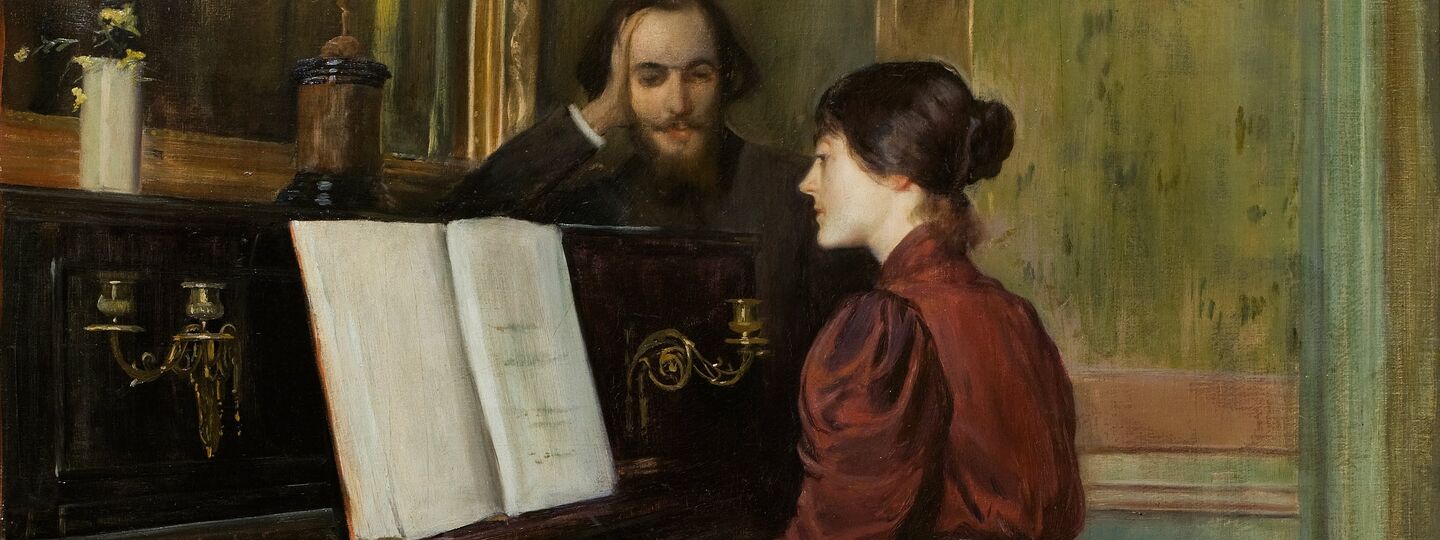
Info
Une romance
Santiago Rusiñol
1894
Museu Nacional d'Art de Catalunya - MNAC, Barcelona

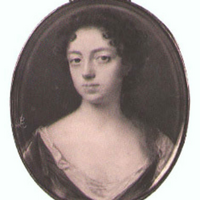
Anne Finch (née Kingsmill), Countess of Winchilsea (April 1661– 5 August 1720), was an English poet, the third child of Sir William Kingsmill of Sydmonton Court and his wife, Anne Haslewood. She was well-educated as her family believed in good education for girls as well as for boys. In 1682, Anne Kingsmill went to St James’s Palace to become a maid of honour to Mary of Modena (wife of James, Duke of York, who later became King James II). There she met the courtier Heneage Finch whom she married on 15 May 1684. It was a happy marriage and Anne wrote several love poems to her husband, most famous perhaps A Letter to Dafnis, though her most well-known works speak on her bouts of depression and her fervent belief in social justice for women. Finch’s works often express a desire for respect as a female poet, lamenting her difficult position as a woman in the literary establishment and the court, while writing of an intense artistic impulse to write despite the difficulties. On 4 August 1712, Charles Finch, 4th Earl of Winchilsea, died childless. This made Anne’s husband, his uncle, the 5th Earl of Winchilsea, and Anne, the Countess of Winchilsea. She died in Westminster in 1720 and was buried at her home at Eastwell, Kent. Works * Did I, my lines intend for public view, How many censures, would their faults pursue, Some would, because such words they do affect, Cry they’re insipid, empty, and uncorrect. And many have attained, dull and untaught, The name of wit only by finding fault. True judges might condemn their want of wit, * And all might say, they’re by a woman writ…" (Finch, The Introduction) * With these lines, written in the poem The Introduction by Anne Finch, Countess of Winchilsea, readers are welcomed into a vibrant, emotional, and opinionated style. They are unapologetically let in on the distinctly female voice that is to come. Melancholy, full of wit, and socially conscious, Anne Finch wrote verse and dramatic literature with a talent that has caused her works to not only survive, but to flourish in an impressive poetic legacy throughout the centuries since her death. * Finch’s range as a writer was vast. She experimented with the poetic traditions of her day, often straying from the fold through her use of rhyme, meter and content, which ranged from the simplistic to the metaphysical. Additionally, Finch wrote several satiric vignettes modelled after the short tales of French fabulist Jean de La Fontaine. She mocked La Fontaine’s fables, offering social criticism through biting sarcasm. Finch’s more melancholy fare, however, gained her wider acclaim. Her famous poems in this sullen vein include A Nocturnal Reverie and Ardelia to Melancholy, both depicting severe depression. Her poetry is often considered to fall in the category of Augustan, reflecting upon nature and finding both an emotional and religious relationship to it in her verse. Finch also skilfully employed the Pindaric ode, exploring complex and irregular structures and rhyme schemes. Her most famous example of this technique is in The Spleen (1709), a poetic expression of depression and its effects: * What art thou, Spleen, which ev’ry thing dost ape? * Thou Proteus to abused mankind, Who never yet thy real cause could find, Or fix thee to remain in one continued shape. Still varying thy perplexing form, Now a Dead Sea thou’lt represent, A calm of stupid discontent, Then, dashing on the rocks wilt rage into a storm. Trembling sometimes thou dost appear, * Dissolved into a panic fear… (Finch, The Spleen) * This poem was first published anonymously, though it went on to become one of her most renowned pieces. As Virginia Woolf, a later proponent of intellectual investigation into Finch’s life and work, once famously wrote, “I would venture to guess that Anon, who wrote so many poems without signing them, was often a woman” (Woolf, A Room of One’s Own). * Anne Finch is known today as one of the most versatile and gifted poets (one of her poems was set to music by Purcell) of her generation. Biography * (The following essay is taken from the Biography Reference Center.) * As a poet, Finch attained a modest amount of notoriety during her lifetime, which spanned the late 17th and early 18th centuries. However, her large body of work, written during the Augustan period (approximately 1660–1760), would earn greater attention after her death. While Finch also authored fables and plays, today she is best known for her poetry: lyric poetry, odes, love poetry and prose poetry. Later literary critics recognised the diversity of her poetic output as well as its personal and intimate style. * In her works Finch drew upon her own observations and experiences, demonstrating an insightful awareness of the social mores and political climate of her era. But she also artfully recorded her private thoughts, which could be joyful or despairing, playful or despondent. The poems also revealed her highly developed spiritual side. * Finch was born Anne Kingsmill in April 1661 in Sydmonton, Hampshire, located in the southern part of England. Her parents were Sir William Kingsmill and Anne Haslewood. She was the youngest of three children. Her siblings included William and Bridget Kingsmill. * The young Anne never knew her father, as he died only five months after she was born. In his will, he specified that his daughters receive financial support equal to that of their brother for their education. Her mother remarried in 1662, to Sir Thomas Ogle, and later bore Anne Kingsmill’s half-sister, Dorothy Ogle. Anne would remain close to Dorothy for most of their lives. * Finch’s mother died in 1664. Shortly before her death she wrote a will giving control of her estate to her second husband. The will was successfully challenged in a Court of Chancery by Anne Kingsmill’s uncle, William Haslewood. Subsequently, Anne and Bridget Kingsmill lived with their grandmother, Lady Kingsmill, in Charing Cross, London, while their brother lived with his uncle William Haslewood. * In 1670 Lady Kingsmill filed her own Court of Chancery suit, demanding from William Haslewood a share in the educational and support monies for Anne and Bridget. The court split custody and financial support between Haslewood and Lady Kingsmill. When Lady Kingsmill died in 1672, Anne and Bridget rejoined their brother to be raised by Haslewood. The sisters received a comprehensive and progressive education, something that was uncommon for females at the time, and Anne Kingsmill learned about Greek and Roman mythology, the Bible, French and Italian languages, history, poetry, and drama. At the court of Charles II * The sisters remained in the Haslewood household until their uncle’s death in 1682. 21 years old at the time, Anne Kingsmill then went to live at St James’s Palace, joining the court of Charles II. She became one of six maids of honour to Mary of Modena, who was the wife of James, Duke of York, who would later become King James II. * Apparently Anne’s interest in poetry began at the palace, and she started writing her own verse. Her friends included Sarah Churchill and Anne Killigrew, two other maids of honour who also shared poetic interests. However, when Anne Kingsmill witnessed the derision within the court that greeted Killigrew’s poetic efforts (poetry was not a pursuit considered suitable for women), she decided to keep her own writing attempts to herself and her close friends. She remained secretive about her poetry until much later in her life, when she was encouraged to publish under her own name. * While residing at court, Anne Kingsmill also met Colonel Heneage Finch, the man who would become her husband. A courtier as well as a soldier, Colonel Finch had been appointed Groom of the Bedchamber to James, Duke of York, in 1683. His family had strong Royalist connections, as well as a pronounced loyalty to the Stuart dynasty, and his grandmother had become Countess of Winchilsea in 1628. Finch met Kingsmill and fell in love with her, but she at first resisted his romantic overtures. However, Finch proved a persistent suitor and the couple was finally married on 15 May 1684. * Upon her marriage, Anne Finch resigned her court position, but her husband retained his own appointment and would serve in various government positions. As such, the couple remained involved in court life. During the 1685 coronation of James II, Heneage Finch carried the canopy of the Queen, Mary of Modena, who had specifically requested his service. * The couple’s marriage proved to be enduring and happy, in part due to the aspects of equality in their partnership. Indeed, part of the development of her poetic skills was brought about by expressing her joy in her love for her husband and the positive effects of his lack of patriarchal impingement on her artistic development. These early works, many written to her husband (such as "A Letter to Dafnis: April 2d 1685"), celebrated their relationship and ardent intimacy. In expressing herself in such a fashion, Anne Finch quietly defied contemporary social conventions. In other early works she aimed a satiric disapproval at prevailing misogynistic attitudes. Still, her husband strongly supported her writing activities. * Despite their court connections, Anne and Heneage Finch led a rather sedate life. At first they lived in Westminster; then, as Heneage Finch became more involved in public affairs, they moved to London. His involvement had increased when James II took the throne in 1685. The couple demonstrated great loyalty to the king in what turned out to be a brief reign. Refusal to take Oath of Allegiance to King William * James II was deposed in 1688 during the “Bloodless Revolution”. During his short reign, James fell under intense criticism for his autocratic manner of rule. Eventually he fled England for exile in Saint-Germain, France. As a result, the British Parliament offered William of Orange the English crown. When the new monarchs, William and Mary, assumed the throne, oaths of allegiance became a requirement for both the public and the clergy. William and Mary were Protestants, and the Finches remained loyal to the Catholic Stuart court, refusing to take the oath. They also viewed their oaths to the previous monarchy as morally binding and constant. But such a stance invited trouble. Heneage Finch lost his government position and retreated from public life. As the loss of his position entailed a loss of income, the Finches were forced to live with friends in London for a period. However, while living in the city the couple faced harassment, fines and potential imprisonment. * In April 1690 Heneage Finch was arrested and charged with Jacobitism for attempting to join the exiled James II in France. It was a difficult time for Jacobites and Nonjurors (those who had refused to take the oath of allegiance, such as the Finches), as their arrests and punishments were abusive. Because of his arrest, Heneage and Anne Finch remained separated from April until November of that year. Understandably, the circumstances caused the couple a great deal of emotional turmoil. Living with friends in Kent while her husband prepared his defence in London, Anne Finch often succumbed to bouts of depression, something that afflicted her for most of her adult life. The poems that she wrote during this period, such as “Ardelia to Melancholy”, reflected her mental state. Other poems involved political themes. But all of her work was noticeably less playful and joyous than her earlier output. Move to country estate * After Heneage Finch was released and his case dismissed, his nephew Charles Finch, the fourth Earl of Winchelsea, invited the couple to permanently move into the family’s Eastwell Park, Kent, estate. The Finches took up residence in late 1690 and found peace and security on the beautiful estate, where they would live for more than 25 years in the quiet countryside. * For Anne Finch, the estate provided a fertile and supportive environment for her literary efforts. Charles Finch was a patron of the arts and, along with Heneage Finch, he encouraged Anne’s writing. Her husband’s support was practical. He began collecting a portfolio of her 56 poems, writing them out by hand and making corrective changes. One significant change involved Anne’s pen name, which Heneage changed from “Areta” to “Ardelia”. * The peace and seclusion at Eastwell fostered the development of Finch’s poetry, and the retirement in the country provided her with her most productive writing period. Her work revealed her growing knowledge of contemporary poetic conventions, and the themes she addressed included metaphysics, the beauty of nature (as expressed in “A Nocturnal Reverie”), and the value of friendship (as in “The Petition for an Absolute Retreat”). Return to public life * By the early 18th century the political climate in England had generally improved for the Finches. King William died in 1702, and his death was followed by the succession to the throne of Queen Anne, the daughter of James II, who had died in 1701. With these developments, the Finches felt ready to embrace a more public lifestyle. Heneage Finch ran for a parliamentary seat three times (in 1701, 1705, and 1710), but was never elected. Still, the Finches felt the time was right to leave the seclusion of the country life and move into a house in London. * In London, Anne Finch was encouraged to publish her poetry under her own name. Earlier, in 1691, she had anonymously published some of her poetry. In 1701 she published “The Spleen” anonymously. This well-received reflection on depression would prove to be the most popular of her poems in her lifetime. When the Finches returned to London, Anne acquired some important and influential friends, including renowned writers such as Jonathan Swift and Alexander Pope, who encouraged her to write and publish much more openly. * She was reluctant, as she felt the current social and political climate remained oppressive as far as women were concerned. (In her poem “The Introduction,” which was privately circulated, she reflected on contemporary attitudes toward female poets.) When she published Miscellany Poems, on Several Occasions in 1713, the cover page of the first printing indicated that the collected works (which included 86 poems as well as a play) were “Written by a Lady.” However, on subsequent printings, Finch (as Anne, Countess of Winchilsea) received credit as the author. Lady Winchilsea * Anne Finch became Countess of Winchilsea upon the sudden and unexpected death of Charles Finch on 4 August 1712. As Charles Finch had no children, his uncle Heneage Finch (died 1726) became the Earl of Winchilsea, making Anne the Countess. However, the titles came with a cost. The Finches had to assume Charles Finch’s financial and legal burdens. The issues were eventually settled in the Finches’ favour in 1720, but not before the couple had endured nearly seven years of emotional strain. * During this period, Heneage and Anne Finch faced renewed strains resulting from court politics. When Queen Anne died in 1714, she was succeeded by George I. Subsequently, a Whig government, which was hostile to the Jacobite cause, rose to power. The Jacobite rebellion, which took place in Scotland in 1715, further aggravated the tense political situation. The Finches became greatly concerned about their safety, especially after a friend, Matthew Prior, who shared their political sympathies, was sent to prison. Deteriorating health * All of her worries combined started to take a toll on Anne Finch’s health, which began to seriously deteriorate. For years she had been vulnerable to depression, and in 1715 she became seriously ill. Her later poems reflected her turmoil. In particular, “A Suplication for the joys of Heaven” and “A Contemplation” expressed her concerns about her life and political and spiritual beliefs. * She died in Westminster, London, and her body was returned to Eastwell for burial, according to her previously stated wishes. Her husband produced an obituary that praised her talents as a writer and her virtues as an individual. A portion of it read, “To draw her Ladyship’s just Character, requires a masterly Pen like her own (She being a fine Writer, and an excellent Poet); we shall only presume to say, she was the most faithful Servant to her Royall Mistresse, the best Wife to her Noble Lord, and in every other Relation, publick and private, so illustrious an Example of such extraordinary Endowments, both of Body and Mind, that the Court of England never bred a more accomplished Lady, nor the Church of England a better Christian.” Poetry rediscovered * The only major collection of Anne Finch’s writings that appeared in her lifetime was Miscellany Poems, on Several Occasions. Nearly a century after her death her poetic output had been largely forgotten, until the great English poet William Wordsworth praised her nature poetry in an essay included in his 1815 volume Lyrical Ballads. * A major collection titled The Poems of Anne, Countess of Winchilsea, edited by Myra Reynolds, was published in 1903. For many years it was considered the definitive collection of her writings. It remains the only scholarly collection of Finch’s poetry, and includes all of the poems from Miscellany Poems and poems retrieved from manuscripts. Further, Reynolds’s impressive introduction did as much to re-establish Finch’s reputation as Wordsworth’s previous praise. * Later, The Wellesley Manuscript, which contained 53 unpublished poems, was released. Literary scholars have noted Finch’s distinctive voice and her poems’ intimacy, sincerity, and spirituality. They also expressed appreciation for her experimentation as well as her assured usage of Augustan diction and forms. * According to James Winn (The Review of English Studies, lix, 2008, pp 67–85) Anne Finch is the librettist of Venus and Adonis, with music by John Blow; the work is considered by some scholars to be the first true opera in the English language. In his critical edition of the opera for the Purcell Society, Bruce Wood agrees with Winn. * In 1929, in her classic essay A Room of One’s Own, Virginia Woolf both critiques Finch’s writing and expresses great admiration for it. In Woolf’s examination of the “female voice” and her search for the history of female writers, she argues that Finch’s writing is “harassed and distracted with hates and grievances,” pointing out that to Finch “men are hated and feared, because they have the power to bar her way to what she wants to do—which is to write.” However, Woolf excuses the flaws she perceives in Finch’s work by claiming that Finch surely had to “encourage herself to write by supposing that what she writes will never be published.” She goes on to acknowledge that in Finch’s work, "Now and again words issue of pure poetry…It was a thousand pities that the woman who could write like that, whose mind was turned to nature, and reflection, should have been forced to anger and bitterness." Woolf goes on in defence of her as a gifted but sometimes understandably misguided example of women’s writing. It is evident that Woolf sympathises deeply with Finch’s plight as a female poet, and though she takes issue with some of the content in Finch’s writing, she expresses grief that Finch is so unknown: "…when one comes to seek out the facts about Lady Winchilsea, one finds, as usual, that almost nothing is known about her." Woolf wishes to know more about “this melancholy lady, who loved wandering in the fields and thinking about unusual things and scorned, so rashly, so unwisely, ‘the dull manage of a servile house.’”
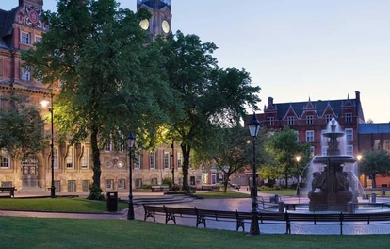
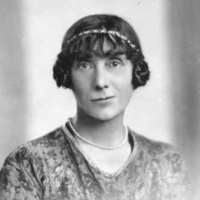
Jessie Pope (18 March 1868– 14 December 1941) was an English poet, writer and journalist, who remains best known for her patriotic motivational poems published during World War I. Wilfred Owen directed his 1917 poem Dulce et Decorum Est at Pope, whose literary reputation has faded into relative obscurity as those of war poets such as Owen and Siegfried Sassoon have grown. Early career Born in Leicester, she was educated at North London Collegiate School. She was a regular contributor to Punch, The Daily Mail and The Daily Express, also writing for Vanity Fair, Pall Mall Magazine and the Windsor. Prose editor A lesser-known literary contribution was Pope’s discovery of Robert Tressell’s novel The Ragged Trousered Philanthropists, when his daughter mentioned the manuscript to her after his death. Pope recommended it to her publisher, who commissioned her to abridge it before publication. This, a partial bowdlerisation, moulded it to a standard working-class tragedy while greatly downgrading its socialist political content. Verse Other works include Paper Pellets (1907), an anthology of humorous verse. She also wrote verses for children’s books, such as The Cat Scouts (Blackie, 1912) and the following eulogy to her friend, Bertram Fletcher Robinson (published in the Daily Express on Saturday 26 January 1907): Good Bye, kind heart; our benisons preceding, Shall shield your passing to the other side. The praise of your friends shall do your pleading In love and gratitude and tender pride. To you gay humorist and polished writer, We will not speak of tears or startled pain. You made our London merrier and brighter, God bless you, then, until we meet again! War poetry Pope’s war poetry was originally published in The Daily Mail; it encouraged enlistment and handed a white feather to youths who would not join the colours. Nowadays, this poetry is considered to be jingoistic, consisting of simple rhythms and rhyme schemes, with extensive use of rhetorical questions to persuade (and sometimes pressure) young men to join the war. This extract from Who’s for the Game? is typical in style: Who’s for the game, the biggest that’s played, The red crashing game of a fight? Who’ll grip and tackle the job unafraid? And who thinks he’d rather sit tight? Other poems, such as The Call (1915)– “Who’s for the trench– Are you, my laddie?”– expressed similar sentiments. Pope was widely published during the war, apart from newspaper publication producing three volumes: Jessie Pope’s War Poems (1915), More War Poems (1915) and Simple Rhymes for Stirring Times (1916). Criticism Her treatment of the subject is markedly in stark contrast to the anti-war stance of soldier poets such as Owen and Siegfried Sassoon. Many of these men found her work distasteful, Owen in particular. His poem Dulce et Decorum Est was a direct response to her writing, originally dedicated “To Jessie Pope etc.”. A later draft amended this as “To a certain Poetess”, later being removed completely to turn the poem into a general reproach on anyone sympathetic to the war. Pope is prominently remembered first for her pro-war poetry, but also as a representative of homefront female propagandists such as Mrs Humphry Ward, May Wedderburn Cannan, Emma Orczy, and entertainers such as Vesta Tilley. In particular, the poem “War Girls”, similar in structure to her pro-war poetry, states how "No longer caged and penned up/They’re going to keep their end up/Until the khaki soldier boys come marching back". Though largely unknown at the time, the War poets like Nichols, Sassoon and Owen, as well as later writers such as Edmund Blunden, Robert Graves, and Richard Aldington, have come to define the experience of the First World War. Reappraisal Pope’s work is today often presented in schools and anthologies as a counterpoint to the work of the War Poets, a comparison by which her pro-war work suffers both technically and politically. Some writers have attempted a partial re-appraisal of her work as an early pioneer of English women in the workforce, while still critical of both the content and artistic merit of her war poetry. Reminded that Pope was primarily a humourist and writer of light verse, her success in publishing and journalism during the pre-war era, when she was described as the “foremost woman humourist” of her day has been overshadowed by her propagandistic war poems. Her verse has been mined for sympathetic portrayals of the poor and powerless, of women urged to be strong and self-reliant. Her portrayal of the Suffragettes in a pair of counterpointed 1909 poems makes a case both for and against their actions. Later life After the war, Pope continued to rewrite, penning a short novel, poems—many of which continued to reflect upon the war and its aftermath—and books for children. She married a widower bank manager in 1929, when she was 61, and moved from London to Fritton, near Great Yarmouth. She died on 14 December 1941 in Devon.

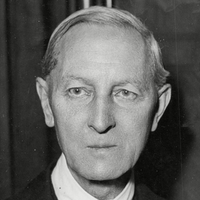
Sir Henry John Newbolt, CH (6 June 1862– 19 April 1938) was an English poet, novelist and historian. He also had a very powerful role as a government adviser, particularly on Irish issues and with regard to the study of English in England. He is perhaps best remembered for his poems "Vitaï Lampada" and “Drake’s Drum”. Background Henry John Newbolt was born in Bilston, Wolverhampton (then located in Staffordshire, but now in the West Midlands), son of the vicar of St Mary’s Church, the Rev. Henry Francis Newbolt, and his second wife, Emily. After his father’s death, the family moved to Walsall, where Henry was educated. Education Newbolt attended Queen Mary’s Grammar School, Walsall, and Caistor Grammar School, from where he gained a scholarship to Clifton College, where he was head of the school (1881) and edited the school magazine. His contemporaries there included John McTaggart, Arthur Quiller-Couch, Roger Fry, William Birdwood, Francis Younghusband and Douglas Haig. Graduating from Corpus Christi College, Oxford, Newbolt was called to the bar at Lincoln’s Inn in 1887 and practised until 1899. Family He married Margaret Edwina Duckworth of the prominent publishing family; they had two children; a boy, Francis and a daughter, Celia. In 1914 Celia Newbolt married Lt. Col. Sir Ralph Dolignon Furse (1887–1973), the Head of Recruitment at HM Colonial Service from 1931 to 1948; they had four children. Lady Furse died in 1975. Subsequently it became apparent that behind the prim Edwardian exterior lay a far more complicated domestic life for Newbolt: a ménage à trois. His wife had a long-running lesbian affair with her cousin and childhood love, Ella Coltman. One of his poems, in which he refers to someone as “dearest”, is entitled “To E.C.” He became Coltman’s lover after a couple of years of marriage, and according to Chitty he divided his time between the two women so there was no jealousy. Publications * His first book was a novel, Taken from the Enemy (1892), and in 1895 he published a tragedy, Mordred; but it was the publication of his ballads, Admirals All (1897), that created his literary reputation. By far the best-known of these is "Vitaï Lampada". They were followed by other volumes of stirring verse, including The Island Race (1898), The Sailing of the Long-ships (1902), Songs of the Sea (1904) and Songs of the Fleet (1910). * In 1914, Newbolt published Aladore, a fantasy novel about a bored but dutiful knight who abruptly abandons his estate and wealth to discover his heart’s desire and woo a half-fae enchantress. It is a tale filled with allegories about the nature of youth, service, individuality and tradition. It was reissued in a new edition by Newcastle Publishing Company in 1975. "Vitaï Lampada" * Probably the best known of all Newbolt’s poems which was written in 1892, and for which he is now chiefly remembered is "Vitaï Lampada". The title is taken from a quotation by Lucretius and means “the torch of life”. It refers to how a schoolboy, a future soldier, learns selfless commitment to duty in cricket matches in the famous Close at Clifton College: * There’s a breathless hush in the Close to-night— * Ten to make and the match to win— * A bumping pitch and a blinding light, * An hour to play and the last man in. * And it’s not for the sake of a ribboned coat, * Or the selfish hope of a season’s fame, * But his captain’s hand on his shoulder smote * “Play up! play up! and play the game!” * The sand of the desert is sodden red,— * Red with the wreck of a square that broke;— * The Gatling’s jammed and the Colonel dead, * And the regiment blind with dust and smoke. * The river of death has brimmed his banks, * And England’s far, and Honour a name, * But the voice of a schoolboy rallies the ranks: * “Play up! play up! and play the game!” * This is the word that year by year, * While in her place the school is set, * Every one of her sons must hear, * And none that hears it dare forget. * This they all with a joyful mind * Bear through life like a torch in flame, * And falling fling to the host behind— * “Play up! play up! and play the game!” * The engagement mentioned in verse two is the Battle of Abu Klea in Sudan in January 1885 during the unsuccessful expedition to rescue General Gordon. Frederick Gustavus Burnaby is the colonel referred to in the line “The Gatling’s jammed and the Colonel’s dead...”, although it was a Gardner machine gun which jammed. The poem was both highly regarded and repeatedly satirised by those who experienced World War I. Drake’s Drum * According to legend a drum owned by Sir Francis Drake will beat in times of national crisis and the spirit of Drake will return to aid his country. Sir Henry reinforced the myth with his 1897 poem Drake’s Drum, “Drake he’s in his hammock an’ a thousand mile away...”, which has been widely anthologised. * The poem has been set to both classical and folk tunes. “'Drakes Drum” is the first of five poetic settings by the composer Charles Villiers Stanford. Stanford has two song cycles, both using the poetry of Newbolt, the Songs of the Sea and also Songs of the Fleet. Monthly Review * Between 1900 and 1905, Newbolt was the editor of the Monthly Review. He was also a member of the Athenaeum and the Coefficients dining club. War and history * At the start of the First World War, Newbolt– along with over 20 other leading British writers– was brought into the War Propaganda Bureau which had been formed to promote Britain’s interests during the war and maintain public opinion in favour of the war. * He subsequently became Controller of Telecommunications at the Foreign Office. His poems about the war include “The War Films”, printed on the leader page of The Times on 14 October 1916, which seeks to temper the shock effect on cinema audiences of footage of the Battle of the Somme. * Newbolt was knighted in 1915 and was appointed Companion of Honour in 1922. * In 1921 he had been the author of a government Report entitled “The Teaching of English in England” which established the foundations for modern English Studies and professionalised the forms of teaching of English Literature. It established a canon, argued that English must become the linguistic and literary standard throughout the British Empire, and even proposed salary rates for lecturers. For many years it was a standard work for English teachers in teacher training Colleges. * Newbolt was also part of the inner advisory circle of Herbert Asquith’s government and would subsequently advise governments on policy in Ireland. Legacy * In his home town of Bilston, a public house was named after him, and a blue plaque is displayed on Barclay’s bank near the street where he was born. * In June 2013 a campaign was launched by The Black Country Bugle to erect a statue in Newbolt’s memory. * Recordings were made of Newbolt reading some of his own poems. They were on four 78rpm sides in the Columbia Records “International Educational Society” Lecture series, Lecture 92 (D40181/2). Death * Newbolt died at his home in Campden Hill, Kensington, London, on 19 April 1938, aged 75. A blue plaque there commemorates his residency. He is buried in the churchyard of St Mary’s church on an island in the lake on the Orchardleigh Estate of the Duckworth family in Somerset. Works * * Mordred: A Tragedy– an Arthurian drama * Admirals All (1897)– including Drake’s Drum * The Old Country (1906) * The New June (1909) * Aladore (1914)– a novel * St George’s Day & Other Poems (1918)– published by John Murray. * The Naval History of the Great War: Based on Official Documents Volumes IV and V– Newbolt took over after Sir Julian Corbett died * A Ballad of Sir Pertab Singh * He Fell among Thieves * Story of the Oxfordshire & Buckinghamshire Light Infantry (The Old 43rd & 52nd Regiments) * My World as in My Time (1932)– his autobiography * A Note on the History of Submarine War * Submarine and Anti-Submarine (1919) Sources and references * * This article incorporates text from a publication now in the public domain: Chisholm, Hugh, ed. (1911). “article name needed”. Encyclopædia Britannica (11th ed.). Cambridge University Press. External links * * Works by Henry John Newbolt at Project Gutenberg * Works by or about Henry Newbolt at Internet Archive * Works by Henry Newbolt at LibriVox (public domain audiobooks) * Text of the poem Mors Janua . References Wikipedia—https://en.wikipedia.org/wiki/Henry_Newbolt

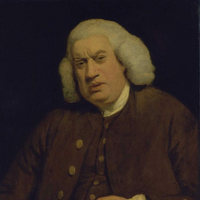
Samuel Johnson (18 September 1709 – 13 December 1784), often referred to as Dr Johnson, was an English writer who made lasting contributions to English literature as a poet, essayist, moralist, literary critic, biographer, editor and lexicographer. Johnson was a devout Anglican and committed Tory, and has been described as “arguably the most distinguished man of letters in English history”. He is also the subject of “the most famous single biographical work in the whole of literature,” James Boswell’s Life of Samuel Johnson. Born in Lichfield, Staffordshire, Johnson attended Pembroke College, Oxford for just over a year, before his lack of funds forced him to leave. After working as a teacher, he moved to London, where he began to write for The Gentleman’s Magazine. His early works include the biography Life of Mr Richard Savage, the poems London and The Vanity of Human Wishes, and the play Irene.

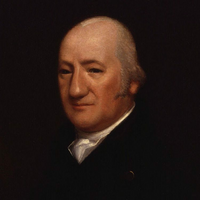
Henry James Pye (/paɪ/; 10 February 1744– 11 August 1813) was an English poet. Pye was Poet Laureate from 1790 until his death. He was the first poet laureate to receive a fixed salary of £27 instead of the historic tierce of Canary wine (though it was still a fairly nominal payment; then as now the Poet Laureate had to look to extra sales generated by the prestige of the office to make significant money from the Laureateship). Life Pye was born in London, the son of Henry Pye of Faringdon House in Berkshire, and his wife, Mary James. He was the nephew of Admiral Thomas Pye. He was educated at Magdalen College, Oxford. His father died in 1766, leaving him a legacy of debt amounting to £50,000, and the burning of the family home further increased his difficulties. In 1784 he was elected Member of Parliament for Berkshire. He was obliged to sell the paternal estate, and, retiring from Parliament in 1790, became a police magistrate for Westminster. Although he had no command of language and was destitute of poetic feeling, his ambition was to obtain recognition as a poet, and he published many volumes of verse. Of all he wrote his prose Summary of the Duties of a Justice of the Peace out of Sessions (1808) is most worthy of record. He was made poet laureate in 1790, perhaps as a reward for his faithful support of William Pitt the Younger in the House of Commons. The appointment was looked on as ridiculous, and his birthday odes were a continual source of contempt. The 20th century British historian Lord Blake called Pye “the worst Poet Laureate in English history with the possible exception of Alfred Austin.” Indeed, Pye’s successor, Robert Southey, wrote in 1814: “I have been rhyming as doggedly and dully as if my name had been Henry James Pye.” After his death, Pye remained one of the unfortunate few who have been classified as a “poetaster.” As a prose writer, Pye was far from contemptible. He had a fancy for commentaries and summaries. His “Commentary on Shakespeare’s commentators”, and that appended to his translation of the Poetics, contain some noteworthy matter. A man, who, born in 1745, could write “Sir Charles Grandison is a much more unnatural character than Caliban,” may have been a poetaster but was certainly not a fool. He died in Pinner, Middlesex on 11 August 1813. Pye married twice. He had two daughters by his first wife. He married secondly in 1801 Martha Corbett, by whom he had a son Henry John Pye, who in 1833 inherited the Clifton Hall, Staffordshire estate of a distant cousin and who was High Sheriff of Staffordshire in 1840. Works Prose * Summary of the Duties of a Justice of the Peace out of Sessions (1808) * The Democrat (1795) * The Aristocrat (1799) Poetry * Poems on Various Subjects (1787), first substantial collection of Pye’s verse * Adelaide: a Tragedy in Five Acts (1800) * Alfred (1801) Translations * Aristotle’s Poetics (1792) References Wikipedia—https://en.wikipedia.org/wiki/Henry_James_Pye
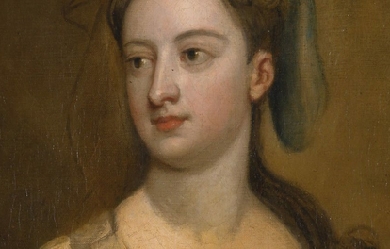
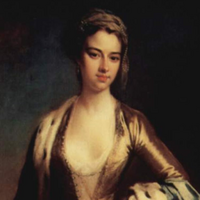
Lady Mary Wortley Montagu (baptized 26 May 1689– 21 August 1762) was an English aristocrat, letter writer and poet. Lady Mary is today chiefly remembered for her letters, particularly her letters from travels to the Ottoman Empire, as wife to the British ambassador to Turkey, which have been described by Billie Melman as “the very first example of a secular work by a woman about the Muslim Orient”. Aside from her writing, Lady Mary is also known for introducing and advocating for smallpox inoculation to Britain after her return from Turkey. Her writings usually address and challenge the hindering contemporary social attitudes towards women and their intellectual and social growth. Early life and education Lady Mary Wortley Montagu, Mary Pierrepont, was born in May 1689; her baptism took place on 26 May, at a few days old, at St. Paul’s Church in Covent Garden. She was the eldest child of Evelyn Pierrepont, 1st Duke of Kingston-upon-Hull, and his first wife, Mary (Fielding) Pierrepont. Her mother had three more children, two girls and a boy, before dying in October 1692. The children were raised by their Pierrepont grandmother until Mary was nine years old. Lady Mary was then passed to the care of her father upon her grandmother’s death. She began her education in her father’s home. Family holdings were extensive, including Thoresby Hall and Holme Pierrepont Hall in Nottinghamshire, and a house in West Dean in Wiltshire. To supplement the instruction of a despised governess, Lady Mary used the library in her father’s mansion, Thoresby Hall in Nottinghamshire, to “steal” her education, teaching herself Latin, a language reserved for men at the time. By 1705, at the age of fourteen or fifteen, Mary Pierrepont had written two albums filled with poetry, a brief epistolary novel, and a prose-and-verse romance modeled after Aphra Behn’s Voyage to the Isle of Love (1684). She also corresponded with two bishops, Thomas Tenison and Gilbert Burnet. Marriage and embassy to Ottoman Empire By 1710 Lady Mary had two possible suitors to choose from: Edward Wortley Montagu and Clotworthy Skeffington. Lady Mary corresponded with Edward Wortley Montagu via letters from 28 March 1710 to 2 May 1711. After May 1711 there was a break in contact between Lady Mary and Edward Wortley Montagu. Mary’s father, now Marquess of Dorchester, rejected Wortley Montagu as a prospect because he refused to entail his estate on a possible heir. Her father pressured her to marry Clotworthy Skeffington, heir to an Irish peerage. In order to avoid marriage to Skeffington, she eloped with Wortley. The marriage license is dated 17 August 1712, the marriage probably took place on 23 August 1712. The early years of Lady Mary Wortley Montagu’s married life were spent in the country. She had a son, Edward Wortley Montagu the younger, on 16 May 1713, in London. A couple of months later, on 1 July 1713 Lady Mary’s brother, aged twenty, died of smallpox and left behind two children. On 13 October 1714, her husband accepted post as Junior Commissioner of Treasury. When Lady Mary joined him in London, her wit and beauty soon made her a prominent figure at court. She was among the society of George I and the Prince of Wales, and counted amongst her friends Molly Skerritt, Lady Walpole, John, Lord Hervey, Mary Astell, Sarah Churchill, Duchess of Marlborough, Alexander Pope, John Gay, and Abbé Antonio Conti. In December 1715, Lady Mary contracted smallpox. She survived, but while she was ill someone circulated the satirical “court eclogues” she had been writing. One of the poems was read as an attack on Caroline, Princess of Wales, in spite of the fact that the “attack” was voiced by a character who was herself heavily satirized. In 1716, Edward Wortley Montagu was appointed Ambassador at Istanbul. In August 1716, Lady Mary accompanied him to Vienna, and thence to Adrianople and Istanbul. He was recalled in 1717, but they remained at Istanbul until 1718. While away from England, the Wortley Montagu’s had a daughter on 19 January 1718, who would grow up to be Mary, Countess of Bute. After an unsuccessful delegation between Austria and Turkey/Ottoman Empire, they set sail for England via the Mediterranean, and reached London on 2 October 1718. The story of this voyage and of her observations of Eastern life is told in Letters from Turkey, a series of lively letters full of graphic descriptions; Letters is often credited as being an inspiration for subsequent female travelers/writers, as well as for much Orientalist art. During her visit she was sincerely charmed by the beauty and hospitality of the Ottoman women she encountered, and she recorded her experiences in a Turkish bath. She also recorded a particularly amusing incident in which a group of Turkish women at a bath in Sofia, horrified by the sight of the stays she was wearing, exclaimed that "the husbands in England were much worse than in the East, for [they] tied up their wives in little boxes, the shape of their bodies". Lady Mary wrote about misconceptions previous travelers, specifically male travelers, had recorded about the religion, traditions and the treatment of women in the Ottoman Empire. Her gender and class status provided her with access to female spaces, that were closed off to males. Her personal interactions with Ottoman women enabled her to provide a more accurate account of Turkish women, their dress, habits, traditions, limitations and liberties. Lady Mary returned to the West with knowledge of the Ottoman practice of inoculation against smallpox, known as variolation. Ottoman smallpox inoculation Lady Mary Wortley Montagu defied convention most memorably by introducing smallpox inoculation to Western medicine after witnessing it during her travels and stay in the Ottoman Empire. In the Ottoman Empire, she visited the women in their segregated zenanas, making friends and learning about Turkish customs. There she witnessed the practice of inoculation against smallpox—variolation—which she called engrafting, and wrote home about it a number of her letters. Variolation used live smallpox virus in the pus taken from a smallpox blister in a mild case of the disease and introduced it into scratched skin of a previously uninfected person to promote immunity to the disease. Lady Mary’s brother had died of smallpox in 1713 and her own famous beauty had been marred by a bout with the disease in 1715. Lady Mary was eager to spare her children, thus, in March 1718 she had her nearly five-year-old son inoculated with the help of Embassy surgeon Charles Maitland. On her return to London, she enthusiastically promoted the procedure, but encountered a great deal of resistance from the medical establishment, because it was an Oriental folk treatment process. In April 1721, when a smallpox epidemic struck England, she had her daughter inoculated by Charles Maitland, the same physician who had inoculated her son at the Embassy in Turkey, and publicized the event. This was the first such operation done in Britain. She persuaded Princess Caroline to test the treatment. In August 1721, seven prisoners at Newgate Prison awaiting execution were offered the chance to undergo variolation instead of execution: they all survived and were released. Controversy over smallpox inoculation intensified, however, Caroline, Princess of Wales was convinced. The Princess’s two daughters were successfully inoculated in April 1722 by French-born surgeon Claudiius Amyand. In response to the general fear of inoculation, Lady Mary, under a pseudonym, wrote and published an article describing and advocating in favor of inoculation in September 1722. In later years, Edward Jenner, who was 13 years old when Lady Mary died, developed the much safer technique of vaccination using cowpox instead of smallpox. As vaccination gained acceptance, variolation gradually fell out of favor. Later years After returning to England, Lady Mary took less interest in court compared to her earlier years. Instead she was more focused on the upbringing of her children, reading, writing and editing her travel letters—which she then chose not to publish. Before starting for the East Lady Mary Wortley Montagu had met Alexander Pope, and during her Embassy travels with her husband, they wrote each other a series of letters. While Pope may have been fascinated by her wit and elegance, Lady Mary’s replies to his letters reveal that she was not equally smitten. Very few letters passed between them after Lady Mary’s return to England, and various reasons have been suggested for the subsequent estrangement. In 1728, Pope attacked Lady Mary in his Dunciad inaugurating a decade in which most of his publications made some sort of allegation against her. Lady Mary went through a series of trials with her children. In 1726 and 1727, Lady Mary’s son ran away from Westminster School several times. He was entrusted to a tutor with strict orders to keep young Edward Montagu abroad. In later years her son managed to return to England without permission and continued to have a strained relationship with both his parents. In August 1736, Lady Mary’s daughter, married John Stuart, 3rd Earl of Bute, despite her parent’s disapproval of the match. The same year Lady Mary met and fell in love with Francesco Algarotti, Count Algarotti, competing with an equally smitten John Hervey for the Count’s affections. Lady Mary wrote many letters to Algarotti in English and in French after his departure from England in September 1736. In July 1739 Lady Mary departed England ostensibly for health reasons declaring her intentions to winter in the south of France. In reality, she left to visit and live with Algarotti in Venice. Their relationship ended in 1741 after Lady Mary and Algarotti were both on diplomatic mission in Turin. Lady Mary stayed abroad and traveled extensively. After traveling to Venice, Florence, Rome, Genoa and Geneva, she finally settled in Avignon in 1742. She left Avignon in 1746 for Brescia, where she fell ill and stayed for nearly a decade, leaving for Lovere in 1754. After August 1756, she resided in Venice and Padua and saw Algarotti again in November. Lady Mary exchanged letters with her daughter, Lady Bute, discussing topics such as philosophy, literature, and the education of girls, as well as conveying details of her geographical and social surroundings. Lady Mary received news of her husband Edward Wortley Montagu’s death in 1761 and left Venice for England. En route to London, she handed her Embassy Letters to the Rev. Benjamin Sowden of Rotterdam, for safe keeping and “to be dispos’d of as he thinks proper”. Lady Mary reached London in January 1762, and died in the year of her return, on 21 August 1762. Important works and literary place Although Lady Mary Wortley Montagu is now best known for her Embassy Letters, she wrote poetry and essays as well. A number of Lady Mary’s poems and essays were printed in her lifetime, either without or with her permission, in newspapers, in miscellanies, and independently. Montagu did not intend to publish her poetry, but it did circulate widely, in manuscript, among members of her own social circle. Lady Mary was highly suspicious of any idealizing literary language. She wrote most often in heroic couplets, a serious poetic form to employ, and, according to Susan Staves,"excelled at “answer poems.”. Some of her widely anthologized poems include “Constantinople” and “Epistle from Mrs. Yonge to her Husband.” “Constantinople,” written January 1718, is a beautiful poem in heroic couplets describing Britain and Turkey through human history, and representing the state of mind “of knaves, coxcombs, the mob, and party zealous—all characteristic of the London of her time.”. “Epistle from Mrs. Yonge to her Husband,” written 1724, stages a letter from Mrs. Yonge to her libertine husband and exposes the social double standard which led to the shaming and distress of Mrs. Yonge after her divorce. In 1737 and 1738, Lady Mary published anonymously a political periodical called the Nonsense of Common-Sense, supporting the Robert Walpole government (the title was a reference to a journal of the liberal opposition entitled Common Sense). She wrote six Town Eclogues. She wrote notable letters describing her travels through Europe and the Ottoman Empire; these appeared after her death in three volumes. Lady Mary corresponded with Anne Wortley and wrote courtship letters to her future husband Edward Wortley Montagu, as well as love letters to Francesco Algarotti. She corresponded with notable writers, intellectuals and aristocrats of her day. She wrote gossip letters and letters berating the vagaries of fashionable people to her sister, Lady Mar, and exchanged intellectual letters with her adult daughter, Lady Bute. Although, not published during her lifetime, her letters from Turkey were clearly intended for print. She revised them extensively and gave a transcript to the Rev. Benjamin Sowden in Rotterdam in 1761. During the twentieth century Lady Mary’s letters were edited separately from her essays, poems and plays. Montagu’s Turkish letters were to prove an inspiration to later generations of European women travelers and writers. In particular, Montagu staked a claim to the authority of women’s writing, due to their ability to access private homes and female-only spaces where men were not permitted. The title of her published letters refers to “Sources that Have Been Inaccessible to Other Travellers”. The letters themselves frequently draw attention to the fact that they present a different (and, Montagu asserts, more accurate) description than that provided by previous (male) travelers: “You will perhaps be surpriz’d at an Account so different from what you have been entertaind with by the common Voyage-writers who are very fond of speaking of what they don’t know.”. Montagu provides an intimate description of the women’s bathhouse in Sofia, in which she derides male descriptions of the bathhouse as a site for unnatural sexual practices, instead insisting that it was “the Women’s coffee house, where all the news of the Town is told, Scandal invented, etc”. However, Montagu’s detailed descriptions of nude Oriental beauties provided inspiration for male artists such as Ingres, who restored the explicitly erotic content that Montagu had denied. In general, Montagu dismisses the quality of European travel literature of the 18th century as nothing more than "trite observations…superficial…[of] boys [who] only remember where they met with the best wine or the prettyest women.". Montagu’s Turkish letters were frequently cited by imperial women travelers, more than a century after her journey. Such writers cited Montagu’s assertion that women travelers could gain an intimate view of Turkish life that was not available to their male counterparts. However, they also added corrections or elaborations to her observations. In 1739 a book was printed by an unknown author under the pseudonym “Sophia, a person of quality”, titled Woman not Inferior to Man. This book is often attributed to Lady Mary. Her Letters and Works were published in 1837. Montagu’s octogenarian granddaughter Lady Louisa Stuart contributed to this, anonymously, an introductory essay called Biographical Anecdotes of Lady M. W. Montagu, from which it was clear that Stuart was troubled by her grandmother’s focus on sexual intrigues and did not see Lady Mary Wortley Montagu’s Account of the Court of George I at his Accession as history. However, Montagu’s historical observations, both in the “Anecdotes” and the “Turkish Embassy Letters,” prove quite accurate when put in context. Despite the availability of her work in print and the revival efforts of Feminist scholars, the complexity and brilliance of Lady Mary Wortley Montagu’s extensive body of work has not yet been recognized to the fullest.
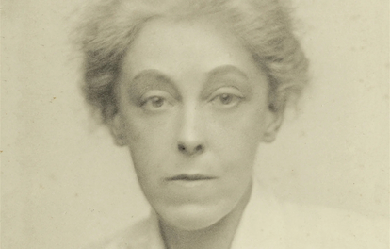

Charlotte Mary Mew (15 November 1869– 24 March 1928) was an English poetess, whose work spans the cusp between Victorian poetry and Modernism. She was born in Bloomsbury, London, the daughter of the architect Frederick Mew, who designed Hampstead town hall, and Anna Kendall.The marriage produced seven children. Charlotte, nicknamed Lotti by her family, attended Gower Street School, where she became infatuated with the school’s headmistress, Lucy Harrison, and lectures at University College London. Her father died in 1898 without making adequate provision for his family; two of her siblings suffered from mental illness, and were committed to institutions, and three others died in early childhood leaving Charlotte, her mother and her sister, Anne. Charlotte and Anne made a pact never to marry for fear of passing on insanity to their children. (One author calls Charlotte “almost certainly chastely lesbian)”. Through most of her adult life, Mew wore masculine attire and kept her hair short, adopting the appearance of a dandy.

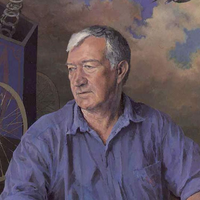
Adrian Mitchell (24 October 1932– 20 December 2008) was an English poet, novelist and playwright. A former journalist, he became a noted figure on the British Left. For almost half a century he was the foremost poet of the country’s anti-Bomb movement. The critic Kenneth Tynan called him “the British Mayakovsky”. Mitchell sought in his work to counteract the implications of his own assertion that, “Most people ignore most poetry because most poetry ignores most people.” In a National Poetry Day poll in 2005 his poem “Human Beings” was voted the one most people would like to see launched into space. In 2002 he was nominated, semi-seriously, Britain’s “Shadow Poet Laureate”. Mitchell was for some years poetry editor of the New Statesman, and was the first to publish an interview with the Beatles. His work for the Royal Shakespeare Company included Peter Brook’s US and the English version of Peter Weiss’s Marat/Sade. Ever inspired by the example of his own favourite poet and precursor William Blake, about whom he wrote the acclaimed Tyger for the National Theatre, his often angry output swirled from anarchistic anti-war satire, through love poetry to, increasingly, stories and poems for children. He also wrote librettos. The Poetry Archive identified his creative yield as hugely prolific. The Times said that Mitchell’s had been a “forthright voice often laced with tenderness.” His poems on such topics as nuclear war, Vietnam, prisons and racism had become “part of the folklore of the Left. His work was often read and sung at demonstrations and rallies.” Biography Early life and career Adrian Mitchell was born near Hampstead Heath, North London. His mother, Kathleen Fabian, was a Fröbel-trained nursery school teacher and his father, Jock Mitchell, a research chemist from Cupar in Fife. He was educated at Monkton Combe School in Bath. He then went to Greenways School, at Ashton Gifford House in Wiltshire, run at the time by a friend of his mother. This, said Mitchell, was “a school in Heaven, where my first play, The Animals’ Brains Trust, was staged when I was nine to my great satisfaction.” His schooling was completed as a boarder at Dauntsey’s School, after which he did his National Service in the RAF. He commented that this “confirmed (his) natural pacificism”. He went on to study English at Christ Church, Oxford, where he was taught by J. R. R. Tolkien’s son. He became chairman of the university’s poetry society and the literary editor of Isis magazine. On graduating Mitchell got a job as a reporter on the Oxford Mail and, later, at the Evening Standard in London. “Inheriting enough money to live on for a year, I wrote my first novel and my first TV play. Soon afterwards I became a freelance journalist, writing about pop music for the Daily Mail and TV for the pre-tabloid Sun and the Sunday Times. I quit journalism in the mid-Sixties and since then have been a free-falling poet, playwright and writer of stories.” Career Mitchell gave frequent public readings, particularly for left-wing causes. Satire was his speciality. Commissioned to write a poem about Prince Charles and his special relationship (as Prince of Wales) with the people of Wales, his measured response was short and to the point: “Royalty is a neurosis. Get well soon.” In “Loose Leaf Poem”, from Ride the Nightmare, he wrote: My brain socialist My heart anarchist My eyes pacifist My blood revolutionary Mitchell was in the habit of stipulating in any preface to his collections: “None of the work in this book is to be used in connection with any examination whatsoever.” His best-known poem, “To Whom It May Concern”, was his bitterly sarcastic reaction to the televised horrors of the Vietnam War. The poem begins: I was run over by the truth one day. Ever since the accident I’ve walked this way So stick my legs in plaster Tell me lies about Vietnam He first read it to thousands of nuclear disarmament protesters who, having marched through central London on CND’s first new format one-day Easter March, finally crammed into Trafalgar Square on the afternoon of Easter Day 1964. As Mitchell delivered his lines from the pavement in front of the National Gallery, angry demonstrators in the square below scuffled with police. In 1972 he confronted then-prime minister Edward Heath about germ warfare and the war in Northern Ireland. He was later responsible for the well-respected stage adaptation of The Lion, the Witch and the Wardrobe, a production of the Royal Shakespeare Company that premiered in November 1998. Over the years he updated the poem to take into account recent events. “He never let up. Most calls—'Can you do this one, Adrian?'—were answered, 'Sure, I’ll be there.' His reading of 'Tell Me Lies’ at a City Hall benefit just before the 2003 invasion of Iraq was electrifying. Of course, he couldn’t stop that war, but he performed as if he could.” One Remembrance Sunday he laid the Peace Pledge Union’s White Poppy wreath on the Cenotaph in Whitehall. On one International Conscientious Objectors’ Day he read a poem at the ceremony at the Conscientious Objectors Commemorative Stone in Tavistock Square in London. Fellow writers could be effusive in their tributes. John Berger said that, “Against the present British state he opposes a kind of revolutionary populism, bawdiness, wit and the tenderness sometimes to be found between animals.” Angela Carter once wrote that he was “a joyous, acrid and demotic tumbling lyricist Pied Piper, determinedly singing us away from catastrophe.” Ted Hughes: “In the world of verse for children, nobody has produced more surprising verse or more genuinely inspired fun than Adrian Mitchell.” Mitchell died at the age of 76 in a North London hospital from a suspected heart attack. For two months he had been suffering from pneumonia. Two days earlier he had completed what turned out to be his last poem, “My Literary Career So Far”. He intended it as a Christmas gift to “all the friends, family and animals he loved”. “Adrian”, said fellow-poet Michael Rosen, “was a socialist and a pacifist who believed, like William Blake, that everything human was holy. That’s to say he celebrated a love of life with the same fervour that he attacked those who crushed life. He did this through his poetry, his plays, his song lyrics and his own performances. Through this huge body of work, he was able to raise the spirits of his audiences, in turn exciting, inspiring, saddening and enthusing them.... He has sung, chanted, whispered and shouted his poems in every kind of place imaginable, urging us to love our lives, love our minds and bodies and to fight against tyranny, oppression and exploitation.” In 2009 Frances Lincoln Children’s Books published an adaptation of Ovid: Shapeshifters: tales from Ovid’s Metamorphoses, written by Mitchell and illustrated by Alan Lee. Family Mitchell is survived by his wife, the actress Celia Hewitt, whose bookshop, Ripping Yarns, is in Highgate, and their two daughters Sasha and Beattie. He also has two sons and a daughter from his previous marriage to Maureen Bush: Briony, Alistair and Danny. There are nine grandchildren: Robin, Arthur, Charlotte, Natasha, Zoe, Caitlin, Annie, Lola and Lilly. Selected bibliography * If You See Me Comin′ (Jonathan Cape, 1962) * Poems (Jonathan Cape, 1964; 978-0224608732) * Out Loud (Cape Goliard, 1968) * Ride the Nightmare (Cape, 1971; ISBN 978-0224005630) * Tyger: A Celebration Based on the Life and Works of William Blake (Cape, 1971; ISBN 978-0224006521) * The Apeman Cometh (Cape, 1975; ISBN 978-0224011471) * Man Friday, novel (Futura, 1975; ISBN 978-0860072744) * For Beauty Douglas: Collected Poems 1953–79, illus. Ralph Steadman (Allison & Busby, 1981; ISBN 978-0850313994) * On the Beach at Cambridge: New Poems (Allison and Busby, 1984; ISBN 978-0850315639) * Nothingmas Day, illus. John Lawrence (Allison & Busby, 1984; ISBN 978-0850315325) * Love Songs of World War Three: Collected Stage Lyrics (Allison and Busby, 1988; ISBN 978-0850319910) * All My Own Stuff, illus. Frances Lloyd (Simon & Schuster, 1991; ISBN 978-0750004466) * Adrian Mitchell’s Greatest Hits– The Top Forty, illus. Ralph Steadman (Bloodaxe Books, 1991; ISBN 978-1852241643) * Blue Coffee: Poems 1985–1996 (Bloodaxe, 1996; 1997 reprint, ISBN 978-1852243623) * Heart on the Left: Poems 1953–1984 (Bloodaxe, 1997; ISBN 978-1852244255) * Balloon Lagoon and Other Magic Islands of Poetry, illus. Tony Ross (Orchard Books, 1997; ISBN 978-1860396595) * Nobody Rides the Unicorn, illus. Stephen Lambert (Corgi Children’s, new edn 2000; ISBN 978-0552546171) * All Shook Up: Poems 1997–2000 (Bloodaxe, 2000; ISBN 978-1852245139) * The Shadow Knows: Poems 2001–2004 (Bloodaxe, 2004) * Tell Me Lies: Poems 2005–2008, illus. Ralph Steadman (Bloodaxe, 2009; ISBN 978-1852248437) * Umpteen Pockets, illus. Tony Ross (Orchard Books, 2009; ISBN 978-1408303634) * Daft as a Doughnut (Orchard Books, 2009; ISBN 978-1408308073) * Shapeshifters: Tales from Ovid’s Metamorphoses, illus. Alan Lee (Frances Lincoln, 2009; ISBN 978-1845075361) * Come on Everybody: Poems 1953–2008 (Bloodaxe, 2012; ISBN 978-1852249465) Awards * * 1961 Eric Gregory Award * 1966 PEN Translation Prize * 1971 Tokyo Festival Television Film Award * 2005 CLPE Poetry Award (shortlist) for Daft as a Doughnut References Wikipedia—https://en.wikipedia.org/wiki/Adrian_Mitchell
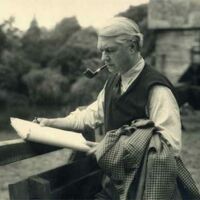
John Drinkwater (1 June 1882 – 25 March 1937) was an English poet and dramatist. Drinkwater was born in Leytonstone, London, and worked as an insurance clerk. In the period immediately before the First World War he was one of the group of poets associated with the Gloucestershire village of Dymock, along with Rupert Brooke and others. In 1919 he had his first major success with his play Abraham Lincoln. He followed it with others in a similar vein, including Mary Stuart and Oliver Cromwell. In 1924, his Lincoln play was adapted for a two-reel short film made by Lee DeForest and J. Searle Dawley featuring Frank McGlynn Sr. as Lincoln, and made in DeForest's Phonofilm sound-on-film process. He had published poetry since The Death of Leander in 1906; the first volume of his Collected Poems was published in 1923. He also compiled anthologies and wrote literary criticism (e.g. Swinburne: an estimate (1913)), and later became manager of Birmingham Repertory Theatre. He was married to Daisy Kennedy, the ex-wife of Benno Moiseiwitsch. Papers relating to John Drinkwater and collected by his stepdaughter are held at the University of Birmingham Special Collections. John Drinkwater made recordings in Columbia Records' International Educational Society Lecture series. They include Lecture 10 – a lecture on The Speaking of Verse (Four 78rpm sides, Cat no. D 40018-40019), and Lecture 70 John Drinkwater reading his own poems (Four 78rpm sides, Cat no. D 40140-40141). Death and commemoration Drinkwater died in London in 1937. He is buried at Piddington, Oxfordshire, where he had spent summer holidays as a child. A road in Leytonstone, formerly a 1960s council estate, is named after Drinkwater, as is a small development of modern houses in Piddington. References Wikipedia – en.wikipedia.org/wiki/John_Drinkwater_(playwright)

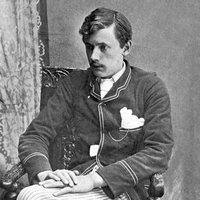
Ernest Christopher Dowson (2 August 1867– 23 February 1900) was an English poet, novelist, and short-story writer, often associated with the Decadent movement. He was born in Lee, London, in 1867. His great-uncle was Alfred Domett, a poet and politician who became Premier of New Zealand and had allegedly been the subject of Robert Browning’s poem “Waring.” Dowson attended The Queen’s College, Oxford, but left in March 1888 before obtaining a degree.

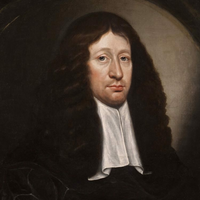
Andrew Marvell (31 March 1621– 16 August 1678) was an English metaphysical poet, satirist and politician who sat in the House of Commons at various times between 1659 and 1678. During the Commonwealth period he was a colleague and friend of John Milton. His poems range from the love-song “To His Coy Mistress”, to evocations of an aristocratic country house and garden in “Upon Appleton House” and “The Garden”, the political address “An Horatian Ode upon Cromwell’s Return from Ireland”, and the later personal and political satires “Flecknoe” and “The Character of Holland”. Early life Marvell was born in Winestead-in-Holderness, East Riding of Yorkshire, near the city of Kingston upon Hull, the son of a Church of England clergyman also named Andrew Marvell. The family moved to Hull when his father was appointed Lecturer at Holy Trinity Church there, and Marvell was educated at Hull Grammar School. A secondary school in the city, the Andrew Marvell Business and Enterprise College, is now named after him. At the age of 13, Marvell attended Trinity College, Cambridge and eventually received a BA degree. A portrait of Marvell attributed to Godfrey Kneller hangs in Trinity College’s collection. Afterwards, from the middle of 1642 onwards, Marvell probably travelled in continental Europe. He may well have served as a tutor for an aristocrat on the Grand Tour, but the facts are not clear on this point. While England was embroiled in the civil war, Marvell seems to have remained on the continent until 1647. It is not known exactly where his travels took him, except that he was in Rome in 1645 and Milton later reported that Marvell had mastered four languages, including French, Italian and Spanish. First poems and Marvell’s time at Nun Appleton Marvell’s first poems, which were written in Latin and Greek and published when he was still at Cambridge, lamented a visitation of the plague and celebrated the birth of a child to King Charles I and Queen Henrietta Maria. He only belatedly became sympathetic to the successive regimes during the Interregnum after Charles I’s execution on 30 January 1649. His “Horatian Ode”, a political poem dated to early 1650, responds with lament to the regicide even as it praises Oliver Cromwell’s return from Ireland. Circa 1650–52, Marvell served as tutor to the daughter of the Lord General Thomas Fairfax, who had recently relinquished command of the Parliamentary army to Cromwell. He lived during that time at Nun Appleton Hall, near York, where he continued to write poetry. One poem, “Upon Appleton House, To My Lord Fairfax”, uses a description of the estate as a way of exploring Fairfax’s and Marvell’s own situation in a time of war and political change. Probably the best-known poem he wrote at this time is “To His Coy Mistress”. Anglo-Dutch War and employment as Latin secretary During the period of increasing tensions leading up to the First Anglo-Dutch War of 1653, Marvell wrote the satirical “Character of Holland,” repeating the then current stereotype of the Dutch as “drunken and profane”: "This indigested vomit of the Sea,/ Fell to the Dutch by Just Propriety.” He became a tutor to Cromwell’s ward, William Dutton, in 1653, and moved to live with his pupil at the house of John Oxenbridge in Eton. Oxenbridge had made two trips to Bermuda, and it is thought that this inspired Marvell to write his poem Bermudas. He also wrote several poems in praise of Cromwell, who was by this time Lord Protector of England. In 1656 Marvell and Dutton travelled to France, to visit the Protestant Academy of Saumur. In 1657, Marvell joined Milton, who by that time had lost his sight, in service as Latin secretary to Cromwell’s Council of State at a salary of £200 a year, which represented financial security at that time. Oliver Cromwell died in 1658. He was succeeded as Lord Protector by his son Richard. In 1659 Marvell was elected Member of Parliament for Kingston-upon-Hull in the Third Protectorate Parliament. He was paid a rate of 6 shillings, 8 pence per day during sittings of parliament, a financial support derived from the contributions of his constituency. He was re-elected MP for Hull in 1660 for the Convention Parliament. After the Restoration The monarchy was restored to Charles II in 1660. Marvell avoided punishment for his own co-operation with republicanism, and he helped convince the government of Charles II not to execute John Milton for his antimonarchical writings and revolutionary activities. The closeness of the relationship between the two former colleagues is indicated by the fact that Marvell contributed an eloquent prefatory poem, entitled “On Mr. Milton’s Paradise Lost”, to the second edition of Milton’s epic Paradise Lost. According to a biographer: “Skilled in the arts of self-preservation, he was not a toady.” In 1661 Marvell was re-elected MP for Hull in the Cavalier Parliament. He eventually came to write several long and bitterly satirical verses against the corruption of the court. Although circulated in manuscript form, some finding anonymous publication in print, they were too politically sensitive and thus dangerous to be published under his name until well after his death. Marvell took up opposition to the 'court party’, and satirised them anonymously. In his longest verse satire, Last Instructions to a Painter, written in 1667, Marvell responded to the political corruption that had contributed to English failures during the Second Anglo-Dutch War. The poem did not find print publication until after the Revolution of 1688–9. The poem instructs an imaginary painter how to picture the state without a proper navy to defend them, led by men without intelligence or courage, a corrupt and dissolute court, and dishonest officials. Of another such satire, Samuel Pepys, himself a government official, commented in his diary, “Here I met with a fourth Advice to a Painter upon the coming in of the Dutch and the End of the War, that made my heart ake to read, it being too sharp and so true.” From 1659 until his death in 1678, Marvell was serving as London agent for the Hull Trinity House, a shipmasters’ guild. He went on two missions to the continent, one to the Dutch Republic and the other encompassing Russia, Sweden, and Denmark. He spent some time living in a cottage on Highgate Hill in north London, where his time in the area is recorded by a bronze plaque that bears the following inscription: Four feet below this spot is the stone step, formerly the entrance to the cottage in which lived Andrew Marvell, poet, wit, and satirist; colleague with John Milton in the foreign or Latin secretaryship during the Commonwealth; and for about twenty years M.P. for Hull. Born at Winestead, Yorkshire, 31st March, 1621, died in London, 18th August, 1678, and buried in the church of St. Giles-in-the-Fields. This memorial is placed here by the London County Council, December, 1898. A floral sundial in the nearby Lauderdale House bears an inscription quoting lines from of his poem “The Garden”. He died suddenly in 1678, while in attendance at a popular meeting of his old constituents at Hull. His health had previously been remarkably good; and it was supposed by many that he was poisoned by some of his political or clerical enemies. Marvell was buried in the church of St Giles in the Fields in central London. His monument, erected by his grateful constituency, bears the following inscription: Near this place lyeth the body of Andrew Marvell, Esq., a man so endowed by Nature, so improved by Education, Study, and Travel, so consummated by Experience, that, joining the peculiar graces of Wit and Learning, with a singular penetration and strength of judgment; and exercising all these in the whole course of his life, with an unutterable steadiness in the ways of Virtue, he became the ornament and example of his age, beloved by good men, feared by bad, admired by all, though imitated by few; and scarce paralleled by any. But a Tombstone can neither contain his character, nor is Marble necessary to transmit it to posterity; it is engraved in the minds of this generation, and will be always legible in his inimitable writings, nevertheless. He having served twenty years successfully in Parliament, and that with such Wisdom, Dexterity, and Courage, as becomes a true Patriot, the town of Kingston-upon-Hull, from whence he was deputed to that Assembly, lamenting in his death the public loss, have erected this Monument of their Grief and their Gratitude, 1688. It may be noted that his epitaph pays more tribute to his political career than his poetry. Prose works Marvell also wrote anonymous prose satires criticizing the monarchy and Catholicism, defending Puritan dissenters, and denouncing censorship. The Rehearsal Transpros’d, an attack on Samuel Parker, was published in two parts in 1672 and 1673. In 1676, Mr. Smirke; or The Divine in Mode, a work critical of intolerance within the Church of England, was published together with a “Short Historical Essay, concerning General Councils, Creeds, and Impositions, in matters of Religion.” Marvell’s pamphlet An Account of the Growth of Popery and Arbitrary Government in England, published in late 1677, alleged that: “There has now for diverse Years, a design been carried on, to change the Lawfull Government of England into an Absolute Tyranny, and to convert the established Protestant Religion into down-right Popery”. John Kenyon described it as “one of the most influential pamphlets of the decade” and G. M. Trevelyan called it: “A fine pamphlet, which throws light on causes provocative of the formation of the Whig party”. A 1678 work published anonymously ("by a Protestant") in defense of John Howe against the attack of his fellow-dissenter, the severe Calvinist Thomas Danson, is also probably by Marvell. Its full title is Remarks upon a late disingenuous discourse, writ by one T.D. under the pretence de causa Dei, and of answering Mr. John Howe’s letter and postscript of God’s prescience, &c., affirming, as the Protestant docrine, that GOd doth by efficacious influence universally move and determine men to all their actions, even to those that are most wicked. Views Although Marvell became a Parliamentarian, he was not a Puritan. He had flirted briefly with Catholicism as a youth, and was described in his thirties (on the Saumur visit) as “a notable English Italo-Machiavellian”. During his lifetime, his prose satires were much better known than his verse. Vincent Palmieri noted that Marvell is sometimes known as the “British Aristides” for his incorruptible integrity in life and poverty at death. Many of his poems were not published until 1681, three years after his death, from a collection owned by Mary Palmer, his housekeeper. After Marvell’s death she laid dubious claim to having been his wife, from the time of a secret marriage in 1667. Marvell’s poetic style T. S. Eliot wrote of Marvell’s style that 'It is more than a technical accomplishment, or the vocabulary and syntax of an epoch; it is, what we have designated tentatively as wit, a tough reasonableness beneath the slight lyric grace’. He also identified Marvell and the metaphysical school with the 'dissociation of sensibility’ that occurred in 17th-century English literature; Eliot described this trend as 'something which... happened to the mind of England... it is the difference between the intellectual poet and the reflective poet’. Poets increasingly developed a self-conscious relationship to tradition, which took the form of a new emphasis on craftsmanship of expression and an idiosyncratic freedom in allusions to Classical and Biblical sources. Marvell’s most celebrated lyric, “To His Coy Mistress”, combines an old poetic conceit (the persuasion of the speaker’s lover by means of a carpe diem philosophy) with Marvell’s typically vibrant imagery and easy command of rhyming couplets. Other works incorporate topical satire and religious themes. References Wikipedia—https://en.wikipedia.org/wiki/Andrew_Marvell
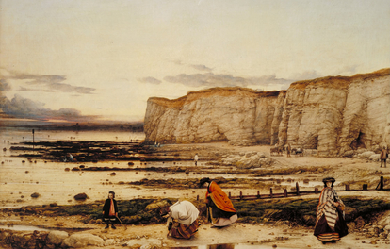
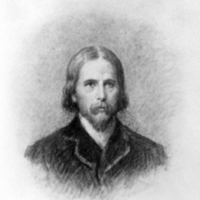
Sydney Thompson Dobell (5 April 1824– 22 August 1874) was an English poet and critic, and a member of the so-called Spasmodic school. He was born at Cranbrook, Kent. His father, John Dobell, was a wine merchant, his mother a daughter of Samuel Thompson (1766–1837), a London political reformer. The family moved to Cheltenham when Dobell was twelve years old. He was educated privately, and never attended either school or university. He refers to this in some lines on Cheltenham College in imitation of Chaucer, written in his eighteenth year. After a five-year engagement he married, in 1844, Emily Fordham, a lady of good family. Acquaintance with James Stansfeld (subsequently Sir James Stansfeld) and with the Birmingham preacher-politician George Dawson fed the young enthusiast’s ardour for the liberalism of the day, and later led to the foundation of the Society of the Friends of Italy.

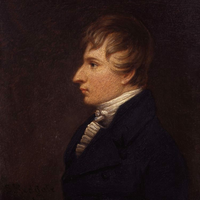
Henry Kirke White (21 March 1785– 19 October 1806) was an English poet, who died at a young age. Life White was born in Nottingham, the son of a butcher, a trade for which he was himself intended. However, he was greatly attracted to book-learning. By age seven, he was giving reading lessons (unbeknownst to the rest of the family, being offered after the household were abed) to a family servant. After being briefly apprenticed to a stocking-weaver, he was articled to a lawyer. While in this position, he excelled in studying Latin and Greek. Seeing the results of White’s diligent studies, his master offered to release him from his contract if he had sufficient means to go to college. He received encouragement from Capel Lofft, the friend of Robert Bloomfield, and published in 1803 Clifton Grove, a Sketch in Verse, with other Poems, dedicated to Georgiana, Duchess of Devonshire. The book was violently attacked in the Monthly Review (February 1804), but White was rewarded with a kind letter from Robert Southey. Through the efforts of his friends, he was able to enter St John’s College, Cambridge, having spent a year beforehand with a private tutor, the Rev Lorenzo Grainger at Winteringham, Lincolnshire. Close application to study induced a serious illness, consumption was the disease, according to Sir Harris Nicholas memoir, to which he ultimately became a victim, and to which White made many allusions in his poems and letters. Fears were also entertained for his sanity, but he went into residence at Cambridge, with a view to taking holy orders, in the autumn of 1805. The strain of continuous study proved fatal. He was buried in the church of All Saints Jewry, Cambridge, which stood opposite the gates of St John’s College, but has since been demolished. The genuine piety of his religious verses secured a place in popular hymnology for some of his hymns, in particular the still popular 'O Lord, another day is flown’. Much of his fame was due to sympathy inspired by his early death; but Lord Byron agreed with Southey about the young man’s promise. Robert Southey said of him 'he could not rest satisfied till he had formed his principles upon the basis of Christianity. Literary legacy His Remains, with his letters (which along with White’s poems contain many allusions to himself that they may almost be considered an autobiography ) and an account of his life, were edited (5 vols., 1807–1822) by Robert Southey. See prefatory notices by Sir Harris Nicolas to his Poetical Works (new ed., 1866) in the Aldine Press British poets; by Harry Kirke Swann in the volume of selections (1897) in the Canterbury Poets; and by John Drinkwater to the edition in the “Muses’ Library.” See also John Thomas Godfrey and J. Ward, The Homes and Haunts of Henry Kirke White (1908). Lord Byron said of White in a tributary eulogy 'while life was in its spring, thy young muse just waved her joyous wing’. White’s complete works were published in 1923. References Wikipedia—https://en.wikipedia.org/wiki/Henry_Kirke_White
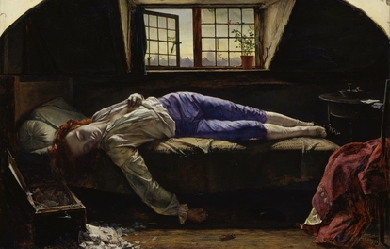
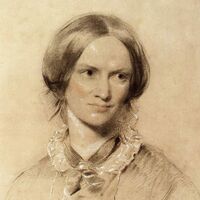
Charlotte Brontë (21 April 1816 – 31 March 1855) was an English novelist and poet, the eldest of the three Brontë sisters who survived into adulthood, whose novels are English literature standards. She wrote Jane Eyre under the pen name Currer Bell. Early life and education Charlotte was born in Thornton, Yorkshire in 1816, the third of six children, to Maria (née Branwell) and her husband Patrick Brontë (formerly surnamed Brunty or Prunty), an Irish Anglican clergyman. In 1820, the family moved a few miles to the village of Haworth, where Patrick had been appointed Perpetual Curate of St Michael and All Angels Church. Charlotte's mother died of cancer on 15 September 1821, leaving five daughters and a son to be taken care of by her sister Elizabeth Branwell. In August 1824, Charlotte was sent with three of her sisters, Emily, Maria, and Elizabeth, to the Clergy Daughters' School at Cowan Bridge in Lancashire (She used the school as the basis for Lowood School in Jane Eyre). The school's poor conditions, Charlotte maintained, permanently affected her health and physical development and hastened the deaths of her two elder sisters, Maria (born 1814) and Elizabeth (born 1815), who died of tuberculosis in June 1825. Soon after their deaths, her father removed Charlotte and Emily from the school. At home in Haworth Parsonage Charlotte acted as "the motherly friend and guardian of her younger sisters". She and her surviving siblings — Branwell, Emily, and Anne – created their own literary fictional worlds, and began chronicling the lives and struggles of the inhabitants of these imaginary kingdoms. Charlotte and Branwell wrote Byronic stories about their imagined country, "Angria", and Emily and Anne wrote articles and poems about "Gondal". The sagas they created were elaborate and convoluted (and still exist in partial manuscripts) and provided them with an obsessive interest during childhood and early adolescence, which prepared them for their literary vocations in adulthood. Charlotte continued her education at Roe Head in Mirfield, from 1831 to 1832, where she met her lifelong friends and correspondents, Ellen Nussey and Mary Taylor. Shortly after she wrote the novella The Green Dwarf (1833) using the name Wellesley. Charlotte returned to Roe Head as a teacher from 1835 to 1838. In 1839, she took up the first of many positions as governess to families in Yorkshire, a career she pursued until 1841. Politically a Tory, she preached tolerance rather than revolution. She held high moral principles, and, despite her shyness in company, was always prepared to argue her beliefs. Brussels In 1842 Charlotte and Emily travelled to Brussels to enrol in a boarding school run by Constantin Heger (1809–96) and his wife Claire Zoé Parent Heger (1804–87). In return for board and tuition, Charlotte taught English and Emily taught music. Their time at the boarding school was cut short when Elizabeth Branwell, their aunt who joined the family after the death of their mother to look after the children, died of internal obstruction in October 1842. Charlotte returned alone to Brussels in January 1843 to take up a teaching post at the school. Her second stay was not a happy one; she became lonely, homesick and deeply attached to Constantin Heger. She returned to Haworth in January 1844 and used her time at the boarding school as the inspiration for some experiences in The Professor and Villette. First publication In May 1846, Charlotte, Emily, and Anne self-financed the publication of a joint collection of poetry under the assumed names of Currer, Ellis and Acton Bell. These pseudonyms veiled the sisters' gender whilst preserving their real initials, thus Charlotte was "Currer Bell". "Bell" was the middle name of Haworth's curate, Arthur Bell Nicholls, whom Charlotte later married. On the decision to use noms de plume, Charlotte wrote: Averse to personal publicity, we veiled our own names under those of Currer, Ellis and Acton Bell; the ambiguous choice being dictated by a sort of conscientious scruple at assuming Christian names positively masculine, while we did not like to declare ourselves women, because — without at that time suspecting that our mode of writing and thinking was not what is called 'feminine' – we had a vague impression that authoresses are liable to be looked on with prejudice; we had noticed how critics sometimes use for their chastisement the weapon of personality, and for their reward, a flattery, which is not true praise. Although only two copies of the collection of poetry were sold, the sisters continued writing for publication and began their first novels, continuing to use their noms de plume when sending manuscripts to potential publishers. Jane Eyre Charlotte's first manuscript, The Professor, did not secure a publisher, although she was heartened by an encouraging response from Smith, Elder & Co of Cornhill, who expressed an interest in any longer works which "Currer Bell" might wish to send. Charlotte responded by finishing and sending a second manuscript in August 1847, and six weeks later Jane Eyre: An Autobiography, was published. Jane Eyre was a success, and initially received favourable reviews. There was speculation about the identity of Currer Bell, and whether Bell was a man or a woman. The speculation heightened on the subsequent publication of novels by Charlotte's sisters: Emily's Wuthering Heights by "Ellis Bell" and Anne's Agnes Grey by "Acton Bell". Accompanying the speculation was a change in the critical reaction to Charlotte's work; accusations began to be made that Charlotte's writing was "coarse", a judgement which was made more readily once it was suspected that "Currer Bell" was a woman. However sales of Jane Eyre continued to be strong, and may even have increased due to the novel's developing reputation as an 'improper' book. Shirley and family bereavements Following the success of Jane Eyre, in 1848 Charlotte began work on the manuscript of her second novel, Shirley. The manuscript was only partially completed when the Brontë household suffered a tragic turn of events, experiencing the deaths of three family members within eight months. In September 1848 Charlotte's only brother, Branwell, died of chronic bronchitis and marasmus exacerbated by heavy drinking, although Charlotte believed his death was due to tuberculosis. Branwell was a suspected "opium eater", a laudanum addict. Emily became seriously ill shortly after Branwell's funeral, and died of pulmonary tuberculosis in December 1848. Anne died of the same disease in May 1849. Charlotte was unable to write at this time. After Anne's death Charlotte resumed writing as a way of dealing with her grief, and Shirley was published in October 1849. Shirley deals with the themes of industrial unrest and the role of women in society. Unlike Jane Eyre, which is written from the first-person perspective of the main character, Shirley is written in the third-person and lacks the emotional immediacy of Jane Eyre, and reviewers found it less shocking. In society In view of the success of her novels, particularly Jane Eyre, Charlotte was persuaded by her publisher to visit London occasionally, where she revealed her true identity and began to move in a more exalted social circle, becoming friends with Harriet Martineau and Elizabeth Gaskell, and acquainted with William Makepeace Thackeray and G. H. Lewes. She never left Haworth for more than a few weeks at a time as she did not want to leave her ageing father's side. Thackeray’s daughter, the writer Anne Isabella Thackeray Ritchie recalled a visit to her father by Charlotte: …two gentlemen come in, leading a tiny, delicate, serious, little lady, with fair straight hair, and steady eyes. She may be a little over thirty; she is dressed in a little barège dress with a pattern of faint green moss. She enters in mittens, in silence, in seriousness; our hearts are beating with wild excitement. This then is the authoress, the unknown power whose books have set all London talking, reading, speculating; some people even say our father wrote the books – the wonderful books… The moment is so breathless that dinner comes as a relief to the solemnity of the occasion, and we all smile as my father stoops to offer his arm; for, genius though she may be, Miss Brontë can barely reach his elbow. My own personal impressions are that she is somewhat grave and stern, specially to forward little girls who wish to chatter… Every one waited for the brilliant conversation which never began at all. Miss Brontë retired to the sofa in the study, and murmured a low word now and then to our kind governess… the conversation grew dimmer and more dim, the ladies sat round still expectant, my father was too much perturbed by the gloom and the silence to be able to cope with it at all… after Miss Brontë had left, I was surprised to see my father opening the front door with his hat on. He put his fingers to his lips, walked out into the darkness, and shut the door quietly behind him… long afterwards… Mrs. Procter asked me if I knew what had happened… It was one of the dullest evenings [Mrs Procter] had ever spent in her life… the ladies who had all come expecting so much delightful conversation, and the gloom and the constraint, and how finally, overwhelmed by the situation, my father had quietly left the room, left the house, and gone off to his club. Friendship with Elizabeth Gaskell Charlotte sent copies of Shirley to leading authors of the day, including Elizabeth Gaskell. Gaskell and Charlotte met in August 1850 and began a friendship which, whilst not necessarily close, was significant in that Gaskell wrote Charlotte's biography after her death in 1855. The Life of Charlotte Brontë, was published in 1857 and was unusual at the time in that, rather than analysing its subject's achievements, it concentrated on the private details of Charlotte's life, in particular placing emphasis on aspects which countered the accusations of 'coarseness' which had been levelled at Charlotte's writing. Though frank in places, Gaskell was selective about which details she revealed; for example, she suppressed details of Charlotte's love for Heger, a married man, as being too much of an affront to contemporary morals and as a source of distress to Charlotte's still-living friends, father and husband. Gaskell also provided doubtful and inaccurate information about Patrick Brontë, claiming, for example, that he did not allow his children to eat meat. This is refuted by one of Emily Brontë's diary papers, in which she describes the preparation of meat and potatoes for dinner at the parsonage, as Juliet Barker points out in her biography, The Brontës. It has been argued that the particular approach of Mrs Gaskell transferred the focus of attention away from the 'difficult' novels, not just of Charlotte but all the sisters, and began a process of sanctification of their private lives. Villette Charlotte's third published novel, and the last to be published during her lifetime, was Villette, which came out in 1853. Its main themes include isolation, how such a condition can be borne, and the internal conflict brought about by societal repression of individual desire. Its main character, Lucy Snowe, travels abroad to teach in a boarding school in the fictional town of Villette, where she encounters a culture and religion different to her own, and where she falls in love with a man ('Paul Emanuel') whom she cannot marry. Her experiences result in her having a breakdown, but eventually she achieves independence and fulfilment in running her own school. Villette marked Charlotte's return to writing from a first-person perspective (that of Lucy Snowe), a technique she had used successfully in Jane Eyre. Another similarity to Jane Eyre was Charlotte's use of aspects from her own life as inspiration for fictional events, in particular reworking her time spent at the pensionnat in Brussels into Lucy spending time teaching at the boarding school, and falling in love with Constantin Heger into Lucy falling in love with 'Paul Emanuel'. Villette was acknowledged by the critics of the day as a potent and sophisticated piece of writing, although it was criticised for its 'coarseness' and not suitably 'feminine' in its portrayal of Lucy's desires. Illness and subsequent death In June 1854, Charlotte married Arthur Bell Nicholls, her father's curate and possibly the model for Jane Eyre's St. John Rivers. She became pregnant soon after the marriage. Her health declined rapidly during this time, and according to Gaskell, she was attacked by "sensations of perpetual nausea and ever-recurring faintness." Charlotte died, with her unborn child, on 31 March 1855, at the age of 38. Her death certificate gives the cause of death as phthisis (tuberculosis), but many biographers[who?] suggest she may have died from dehydration and malnourishment, caused by excessive vomiting from severe morning sickness or hyperemesis gravidarum. There is evidence to suggest that Charlotte died from typhus she may have caught from Tabitha Ackroyd, the Brontë household's oldest servant, who died shortly before her. Charlotte was interred in the family vault in the Church of St Michael and All Angels at Haworth. Posthumously, her first-written novel was published in 1857. The fragment she worked on in her last years in 1860 has been twice completed by recent authors, the more famous version being Emma Brown: A Novel from the Unfinished Manuscript by Charlotte Brontë by Clare Boylan in 2003. Much Angria material has appeared in published form since the author's death.

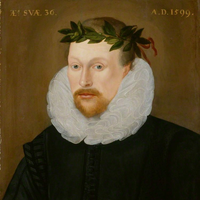
Michael Drayton (1563– 23 December 1631) was an English poet who came to prominence in the Elizabethan era. Early life Drayton was born at Hartshill, near Nuneaton, Warwickshire, England. Almost nothing is known about his early life, beyond the fact that in 1580 he was in the service of Thomas Goodere of Collingham, Nottinghamshire. Nineteenth– and twentieth-century scholars, on the basis of scattered allusions in his poems and dedications, suggested that Drayton might have studied at the University of Oxford, and been intimate with the Polesworth branch of the Goodere family. More recent work has cast doubt on those speculations. Literary career 1591–1602 In 1591 he produced his first book, The Harmony of the Church, a volume of spiritual poems, dedicated to Lady Devereux. It is notable for a version of the Song of Solomon, executed with considerable richness of expression. However, with the exception of forty copies, seized by the Archbishop of Canterbury, the whole edition was destroyed by public order. Nevertheless, Drayton published a vast amount within the next few years. In 1593 appeared Idea: The Shepherd’s Garland, a collection of nine pastorals, in which he celebrated his own love-sorrows under the poetic name of Rowland. The basic idea was expanded in a cycle of sixty-four sonnets, published in 1594, under the title of Idea’s Mirror, by which we learn that the lady lived by the river Ankor in Warwickshire. It appears that he failed to win his “Idea,” and lived and died a bachelor. It has been said Drayton’s sonnets possess a direct, instant, and universal appeal, by reason of their simple straightforward ring and foreshadowed the smooth style of Fairfax, Waller, and Dryden. Drayton was the first to bring the term ode, for a lyrical poem, to popularity in England and was a master of the short, staccato Anacreontics measure. Also in 1593 there appeared the first of Drayton’s historical poems, The Legend of Piers Gaveston, and the next year saw the publication of Matilda, an epic poem in rhyme royal. It was about this time, too, that he brought out Endimion and Phoebe, a volume which he never republished, but which contains some interesting autobiographical matter, and acknowledgments of literary help from Thomas Lodge, if not from Edmund Spenser and Samuel Daniel also. In his Fig for Momus, Lodge reciprocated these friendly courtesies. In 1596 Drayton published his long and important poem Mortimeriados, a very serious production in ottava rima. He later enlarged and modified this poem, and republished it in 1603 under the title of The Barons’ Wars. In 1596 also appeared another historical poem, The Legend of Robert, Duke of Normandy, with which Piers Gaveston was reprinted. In 1597 appeared England’s Heroical Epistles, a series of historical studies, in imitation of those of Ovid. These last poems, written in the heroic couplet, contain some of the finest passages in Drayton’s writings. 1603–1631 By 1597, the poet was resting on his laurels. It seems that he was much favoured at the court of Elizabeth, and he hoped that it would be the same with her successor. But when, in 1603, he addressed a poem of compliment to James I, on his accession, it was ridiculed, and his services rudely rejected. His bitterness found expression in a satire, The Owl (1604), but he had no talent in this kind of composition. Not much more entertaining was his scriptural narrative of Moses in a Map of his Miracles, a sort of epic in heroics printed the same year. In 1605 Drayton reprinted his most important works, his historical poems and the Idea, in a single volume which ran through eight editions during his lifetime. He also collected his smaller pieces, hitherto unedited, in a volume undated, but probably published in 1605, under the title of Poems Lyric and Pastoral; these consisted of odes, eclogues, and a fantastic satire called The Man in the Moon. Some of the odes are extremely spirited. In this volume he printed for the first time the famous Ballad of Agincourt. He had adopted as early as 1598 the extraordinary resolution of celebrating all the points of topographical or antiquarian interest in the island of Great Britain, and on this laborious work he was engaged for many years. At last, in 1613, the first part of this vast work was published under the title of Poly-Olbion, eighteen books being produced, to which the learned Selden supplied notes. The success of this great work, which has since become so famous, was very small at first, and not until 1622 did Drayton succeed in finding a publisher willing to undertake the risk of bringing out twelve more books in a second part. This completed the survey of England, and the poet, who had hoped “to crown Scotland with flowers,” and arrive at last at the Orcades, never crossed the Tweed. In 1627 he published another of his miscellaneous volumes, and this contains some of his most characteristic writing. It consists of the following pieces: The Battle of Agincourt, an historical poem in ottava rima (not to be confused with his ballad on the same subject), and The Miseries of Queen Margaret, written in the same verse and manner; Nimphidia, the Court of Faery, a most joyous and graceful little epic of fairyland; The Quest of Cinthia and The Shepherd’s Sirena, two lyrical pastorals; and finally The Moon Calf, a sort of satire. Nimphidia is the most critically acclaimed, along with his famous ballad on the battle of Agincourt; it is quite unique of its kind and full of rare fantastic fancy. The last of Drayton’s voluminous publications was The Muses’ Elizium in 1630. He died in London, was buried in Poets’ Corner in Westminster Abbey, and had a monument placed over him by the Countess of Dorset, with memorial lines attributed to Ben Jonson. Theatre Like other poets of his era, Drayton was active in writing for the theatre; but unlike Shakespeare, Ben Jonson, or Samuel Daniel, he invested little of his art in the genre. For a period of only five years, from 1597 to 1602, Drayton was a member of the stable of playwrights who supplied material for the theatrical syndicate of Philip Henslowe. Henslowe’s Diary links Drayton’s name with 23 plays from that period, and shows that Drayton almost always worked in collaboration with other Henslowe regulars, like Thomas Dekker, Anthony Munday, and Henry Chettle, among others. Of these 23 plays, only one has survived, that being Part 1 of Sir John Oldcastle, which Drayton composed in collaboration with Munday, Robert Wilson, and Richard Hathwaye. The text of Oldcastle shows no clear signs of Drayton’s hand; traits of style consistent through the entire corpus of his poetry (the rich vocabulary of plant names, star names, and other unusual words; the frequent use of original contractional forms, sometimes with double apostrophes, like “th’adult’rers” or “pois’ned’st”) are wholly absent from the text, suggesting that his contribution to the collaborative effort was not substantial. William Longsword, the one play that Henslowe’s Diary suggests was a solo Drayton effort, was never completed. (Drayton may have preferred the role of impresario to that of playwright; he was one of the lessees of the Whitefriars Theatre, together with Thomas Woodford, nephew of the playwright Thomas Lodge, when it was started in 1608. Around 1606, Drayton was also part of a syndicate that chartered a company of child actors, The Children of the King’s Revels. These may or may not have been the Children of Paul’s under a new name, since the latter group appears to have gone out of existence at about this time. The venture was not a success, dissolving in litigation in 1609.) Friendships Drayton was a friend of some of the most famous men of the age. He corresponded familiarly with Drummond; Ben Jonson, William Browne, George Wither and others were among his friends. There is a tradition that he was a friend of Shakespeare, supported by a statement of John Ward, once vicar of Stratford-on-Avon, that “Shakespear, Drayton and Ben Jonson had a merry meeting, and it seems, drank too hard, for Shakespear died of a feavour there contracted.” In one of his poems, an elegy or epistle to Mr Henry Reynolds, he has left some valuable criticisms on poets whom he had known. That he was a restless and discontented, as well as a worthy, man may be gathered from his own admissions. Editions In 1748 a folio edition of Drayton’s complete works was published under the editorial supervision of William Oldys, and again in 1753 there appeared an issue in four volumes quarto. But these were very unintelligently and inaccurately prepared. A complete edition of Drayton’s works with variant readings was projected by Richard Hooper in 1876, but was never carried to a conclusion; a volume of selections, edited by A. H. Bullen, appeared in 1883. See especially Oliver Elton, Michael Drayton (1906). A complete five-volume edition of Drayton’s work was published by Oxford in 1931-41 (revised 1961), edited by J. William Hebel, K. Tillotson and B. H. Newdigate. That and a two volume edition of Drayton’s poems published at Harvard in 1953, edited by John Buxton, are the only 20th century editions of his poems recorded by the Library of Congress. References Wikipedia—https://en.wikipedia.org/wiki/Michael_Drayton

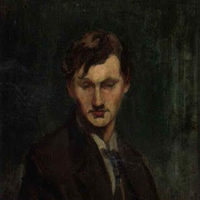
Lionel Pigot Johnson (15 March 1867– 4 October 1902) was an English poet, essayist and critic. Life Johnson was born at Broadstairs, and educated at Winchester College and New College, Oxford, graduating in 1890. He became a Catholic convert in 1891. He lived a solitary life in London, struggling with alcoholism and his repressed homosexuality. He died of a stroke after a fall in the street, though it was said to be a fall from a barstool in the Green Dragon in Fleet Street. During his lifetime were published his The Art of Thomas Hardy (1894), Poems (1895), Ireland and Other Poems (1897). He was one of the Rhymers’ Club, and cousin to Olivia Shakespear (who dedicated her novel The False Laurel to him). In June 1891, Johnson converted to Catholicism, at the same time as he introduced his cousin Lord Alfred Douglas to his friend Oscar Wilde, whom he then repudiated, directing a sonnet at him called “The Destroyer of a Soul” (1892). In 1893, Johnson wrote what some consider his masterpiece, “The Dark Angel”. “The Dark Angel” also served as one of the influences for the Dark Angels chapter of Space Marines in the Warhammer 40,000 fictional universe. Their Primarch, Lion El’Jonson, is also named after the poet. References Wikipedia—https://en.wikipedia.org/wiki/Lionel_Johnson

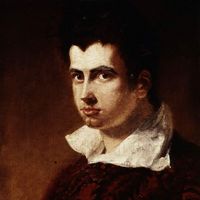
James Henry Leigh Hunt (19 October 1784– 28 August 1859), best known as Leigh Hunt, was an English critic, essayist, poet, and writer. Biography Early life James Henry Leigh Hunt was born at Southgate, London, where his parents had settled after leaving the United States. His father Isaac, a lawyer from Philadelphia, and his mother, Mary Shewell, a merchant’s daughter and a devout Quaker, had been forced to come to Britain because of their loyalist sympathies during the American War of Independence. Hunt’s father took holy orders and became a popular preacher, but he was unsuccessful in obtaining a permanent living. Hunt’s father was then employed by James Brydges, 3rd Duke of Chandos, as tutor to his nephew, James Henry Leigh (father of Chandos Leigh), after whom the boy was named. Education Leigh Hunt was educated at Christ’s Hospital from 1791 to 1799, a period which is detailed in his autobiography. He entered the school shortly after Samuel Taylor Coleridge and Charles Lamb had both left; Thomas Barnes, however, was a school friend of his. One of the current boarding houses at Christ’s Hospital is named after him. As a boy, he was an ardent admirer of Thomas Gray and William Collins, writing many verses in imitation of them. A speech impediment, later cured, prevented his going to university. “For some time after I left school,” he says, “I did nothing but visit my school-fellows, haunt the book-stalls and write verses.” His poems were published in 1801 under the title of Juvenilia, and introduced him into literary and theatrical society. He began to write for the newspapers, and published in 1807 a volume of theatre criticism, and a series of Classic Tales with critical essays on the authors. Hunt’s early essays were published by Edward Quin, editor and owner of The Traveller. Family In 1809, Leigh Hunt married Marianne Kent (whose parents were Thomas and Ann). Over the next 20 years they had ten children: Thornton Leigh (1810–73), John Horatio Leigh (1812–46), Mary Florimel Leigh (1813–49), Swinburne Percy Leigh (1816–27), Percy Bysshe Shelley Leigh (1817–99), Henry Sylvan Leigh (1819–76), Vincent Leigh (1823–52), Julia Trelawney Leigh (1826–72), Jacyntha Leigh (1828–1914), and Arabella Leigh (1829–30). Marianne, who had been in ill health for most of her life, died 26 January 1857, aged sixty-nine. Leigh Hunt made little mention of his family in his autobiography. Marianne’s sister, Elizabeth Kent (Hunt’s sister-in-law), became his amanuensis. Newspapers The Examiner In 1808 he left the War Office, where he had been working as a clerk, to become editor of the Examiner, a newspaper founded by his brother, John. His brother Robert Hunt, among others, also contributed to its columns; his criticism earned the enmity of William Blake, who described the journal’s office at Beaufort Buildings, Strand, London, as containing a “nest of villains”. Blake’s response included Leigh Hunt, who aside from publishing the vitriolic reviews of 1808 and 1809 had added Blake’s name on a list of “quacks”. This journal soon acquired a reputation for unusual political independence; it would attack any worthy target, “from a principle of taste,” as John Keats expressed it. In 1813, an attack on the Prince Regent, based on substantial truth, resulted in prosecution and a sentence of two years’ imprisonment for each of the brothers—Leigh Hunt served his term at the Surrey County Gaol. Leigh Hunt’s visitors in prison included Lord Byron, Thomas Moore, Lord Brougham, Charles Lamb and others, whose acquaintance influenced his later career. The stoicism with which Leigh Hunt bore his imprisonment attracted general attention and sympathy. His imprisonment allowed him many luxuries and access to friends and family, and Lamb described his decorations of the cell as something not found outside a fairy tale. When Jeremy Bentham called on him, he was found playing battledore. A number of essays in The Examiner that were written by Hunt and William Hazlitt between 1814 and 1817 under the series title “The Round Table” were collected in book form in The Round Table, published in two volumes in 1817. Twelve of the fifty-two essays were by Hunt, the rest by Hazlitt. The Reflector In 1810–1811 he edited a quarterly magazine, the Reflector, for his brother John. He wrote “The Feast of the Poets” for this, a satire, which offended many contemporary poets, particularly William Gifford of the Quarterly. The Indicator In 1819–1821, Hunt edited The Indicator, a weekly literary periodical published by Joseph Appleyard. Hunt probably wrote much of the content as well, which included reviews, essays, stories, and poems. Poetry In 1816 he made a mark in English literature with the publication of Story of Rimini, based on the tragic episode of Francesca da Rimini told in Dante’s Inferno. Hunt’s preference was decidedly for Chaucer’s verse style, as adapted to modern English by John Dryden, in opposition to the epigrammatic couplet of Alexander Pope which had superseded it. The poem is an optimistic narrative which runs contrary to the tragic nature of its subject. Hunt’s flippancy and familiarity, often degenerating into the ludicrous, subsequently made him a target for ridicule and parody. In 1818 appeared a collection of poems entitled Foliage, followed in 1819 by Hero and Leander, and Bacchus and Ariadne. In the same year he reprinted these two works with The Story of Rimini and The Descent of Liberty with the title of Poetical Works, and started the Indicator, in which some of his best work appeared. Both Keats and Shelley belonged to the circle gathered around him at Hampstead, which also included William Hazlitt, Charles Lamb, Bryan Procter, Benjamin Haydon, Charles Cowden Clarke, C.W. Dilke, Walter Coulson and John Hamilton Reynolds. This group was known as the Hunt Circle, or, pejoratively, as the Cockney School. Some of Hunt’s most popular poems are “Jenny kiss’d Me”, “Abou Ben Adhem” and “A Night-Rain in Summer”. Friendship with Keats and Shelley He had for some years been married to Marianne Kent. His own affairs were in confusion, and only Percy Bysshe Shelley’s generosity saved him from ruin. In return he showed sympathy to Shelley during the latter’s domestic distresses, and defended him in the Examiner. He introduced Keats to Shelley and wrote a very generous appreciation of him in the Indicator. Keats seems, however, to have subsequently felt that Hunt’s example as a poet had been in some respects detrimental to him. After Shelley’s departure for Italy in 1818, Leigh Hunt became even poorer, and the prospects of political reform less satisfactory. Both his health and that of his wife failed, and he was obliged to discontinue the Indicator (1819–1821), having, he says, “almost died over the last numbers.” Shelley suggested that Hunt go to Italy with him and Byron to establish a quarterly magazine in which Liberal opinions could be advocated with more freedom than was possible at home. An injudicious suggestion, it would have done little for Hunt or the Liberal cause at the best, and depended entirely upon the co-operation of the capricious, parsimonious Byron. Byron’s principal motive for agreeing appears to have been the expectation of acquiring influence over the Examiner, and he was mortified to discover that Hunt was no longer interested in the Examiner. Leigh Hunt left England for Italy in November 1821, but storm, sickness and misadventure retarded his arrival until 1 July 1822, a rate of progress which Thomas Love Peacock appropriately compares to the navigation of Ulysses. The death of Shelley, a few weeks later, destroyed every prospect of success for the Liberal. Hunt was now virtually dependent upon Byron, who did not relish the idea of being patron to Hunt’s large and troublesome family. Byron’s friends also scorned Hunt. The Liberal lived through four quarterly numbers, containing contributions no less memorable than Byron’s “Vision of Judgment” and Shelley’s translations from Faust; but in 1823 Byron sailed for Greece, leaving Hunt at Genoa to shift for himself. The Italian climate and manners, however, were entirely to Hunt’s taste, and he protracted his residence until 1825, producing in the interim Ultra-Crepidarius: a Satire on William Gifford (1823), and his translation (1825) of Francesco Redi’s Bacco in Toscana. In 1825 a litigation with his brother brought him back to England, and in 1828 he published Lord Byron and some of his Contemporaries, a corrective to idealized portraits of Byron. The public was shocked that Hunt, who had been obliged to Byron for so much, would “bite the hand that fed him” in this way. Hunt especially writhed under the withering satire of Moore. For many years afterwards, the history of Hunt’s life is a painful struggle with poverty and sickness. He worked unremittingly, but one effort failed after another. Two journalistic ventures, the Tatler (1830–1832), a daily devoted to literary and dramatic criticism, and Leigh Hunt’s London Journal (1834–1835), were discontinued for want of subscribers, although the latter contained some of his best writing. His editorship (1837–1838) of the Monthly Repository, in which he succeeded William Johnson Fox, was also unsuccessful. The adventitious circumstances which allowed the Examiner to succeed no longer existed, and Hunt’s personality was unsuited to the general body of readers. In 1832 a collected edition of his poems was published by subscription, the list of subscribers including many of his opponents. In the same year was printed for private circulation Christianism, the work afterwards published (1853) as The Religion of the Heart. A copy sent to Thomas Carlyle secured his friendship, and Hunt went to live next door to him in Cheyne Row in 1833. Sir Ralph Esher, a romance of Charles II’s period, had a success, and Captain Sword and Captain Pen (1835), a spirited contrast between the victories of peace and the victories of war, deserves to be ranked among his best poems. In 1840 his circumstances were improved by the successful representation at Covent Garden of his play Legend of Florence. Lover’s Amazements, a comedy, was acted several years afterwards, and was printed in Leigh Hunt’s Journal (1850–1851); other plays remained in manuscript. In 1840 he wrote introductory notices to the work of Sheridan and to Edward Moxon’s edition of the works of William Wycherley, William Congreve, John Vanbrugh and George Farquhar, a work which furnished the occasion of Macaulay’s essay on the Dramatists of the Restoration. The narrative poem The Palfrey was published in 1842. More financial difficulties The time of Hunt’s greatest difficulties was between 1834 and 1840. He was at times in absolute poverty, and his distress was aggravated by domestic complications. By Macaulay’s recommendation he began to write for the Edinburgh Review. In 1844 Mary Shelley and her son, on succeeding to the family estates, settled an annuity of £120 upon Hunt (Rossetti 1890); and in 1847 Lord John Russell procured him a pension of £200. Now living in improved comfort, Hunt published the companion books, Imagination and Fancy (1844), and Wit and Humour (1846), two volumes of selections from the English poets, which displayed his refined, discriminating critical tastes. His book on the pastoral poetry of Sicily, A Jar of Honey from Mount Hybla (1848), is also delightful. The Town (2 vols., 1848) and Men, Women and Books (2 vols., 1847) are partly made up from former material. The Old Court Suburb (2 vols., 1855; ed. A Dobson, 2002) is a sketch of Kensington, where he long resided. In 1850 he published his Autobiography (3 vols.), a naive and affected, but accurate, piece of self-portraiture. A Book for a Corner (2 vols.) was published in 1849, and his Table Talk appeared in 1851. In 1855 his narrative poems, original and translated, were collected under the title Stories in Verse. He died in Putney on 28 August 1859, and is buried at Kensal Green Cemetery. In September 1966 Christ’s Hospital named one of its Houses in memory of him. Leigh Hunt was the original of Harold Skimpole in Bleak House. "Dickens wrote in a letter of 25 September 1853, 'I suppose he is the most exact portrait that was ever painted in words!... It is an absolute reproduction of a real man’; and a contemporary critic commented, 'I recognized Skimpole instantaneously;... and so did every person whom I talked with about it who had ever had Leigh Hunt’s acquaintance.'" G. K. Chesterton suggested that Dickens “may never once have had the unfriendly thought, ‘Suppose Hunt behaved like a rascal!’; he may have only had the fanciful thought, ‘Suppose a rascal behaved like Hunt!’” (Chesterton 1906). Other works Amyntas, A Tale of the Woods (1820), a translation of Tasso’s Aminta Flora Domestica, Or, The Portable Flower-garden: with Directions for the Treatment of Plants in Pots and Illustrations From the Works of the Poets. London: Taylor and Hessey. 1823., with Elizabeth Kent, published anonymously The Seer, or Common-Places refreshed (2 pts., 1840–1841) three of the Canterbury Tales in The Poems of Geoffrey Chaucer modernized (1841) Stories from the Italian Poets (1846) compilations such as One Hundred Romances of Real Life (1843) selections from Beaumont and Fletcher (1855) with S Adams Lee, The Book of the Sonnet (Boston, 1867). His Poetical Works (2 vols.), revised by himself and edited by Lee, were printed at Boston in 1857, and an edition (London and New York) by his son, Thornton Hunt, appeared in 1860. Among volumes of selections are Essays (1887), ed. A Symons; Leigh Hunt as Poet and Essayist (1889), ed. C Kent; Essays and Poems (1891), ed. RB Johnson for the “Temple Library.” His Autobiography was revised shortly before his death, and edited (1859) by his son Thornton Hunt, who also arranged his Correspondence (2 vols., 1862). Additional letters were printed by the Cowden Clarkes in their Recollections of Writers (1878). The Autobiography was edited (2 vols., 1903) with full bibliographical note by Roger Ingpen. A bibliography of his works was compiled by Alexander Ireland (List of the Writings of William Hazlitt and Leigh Hunt, 1868). There are short lives of Hunt by Cosmo Monkhouse ("Great Writers," 1893) and by RB Johnson (1896). Oxford Dictionary of National Biography Volume 28 (2004). References Wikipedia—https://en.wikipedia.org/wiki/Leigh_Hunt

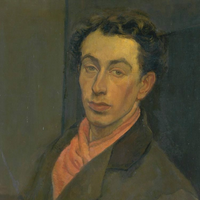
Isaac Rosenberg (25 November 1890– 1 April 1918) was an English poet and artist. His Poems from the Trenches are recognized as some of the most outstanding poetry written during the First World War. Early life Isaac Rosenberg was born in Bristol, the second of six children and the eldest son of his parents (his twin brother died at birth), Barnett (formerly Dovber) and Hacha Rosenberg, who were Lithuanian Jewish immigrants to Great Britain from Dvinsk (now in Latvia). In 1897, the family moved to Stepney, a poor district of the East End of London, and one with a strong Jewish community. Isaac Rosenberg attended St. Paul’s Primary School at Wellclose Square, St George in the East parish. Later, he went to the Baker Street Board School in Stepney, which had a strong Jewish presence. In 1902, he received a good conduct award and was allowed to take classes at the Arts and Crafts School in Stepney Green. In December 1904, he left the Baker Street School, and in January 1905, started an apprenticeship with Carl Hentschel, an engraver from Fleet Street. He became interested in both poetry and visual art, and started to attend evening classes at Birkbeck College. He withdrew from his apprenticeship in January 1911, as he had managed to find the finances to attend the Slade School of Fine Art at University College, London (UCL). During his time at Slade School, Rosenberg notably studied alongside David Bomberg, Mark Gertler, Stanley Spencer, Paul Nash, Edward Wadsworth, Dora Carrington, William Roberts, and Christopher Nevinson. He was taken up by Laurence Binyon and Edward Marsh, and began to write poetry seriously, but he suffered from ill-health. He published a pamphlet of ten poems, Night and Day, in 1912. He also exhibited paintings at the Whitechapel Gallery in 1914. Afraid that his chronic bronchitis would worsen, Rosenberg hoped to cure himself by relocating in 1914 to the warmer climate of South Africa, where his sister Mina lived in Cape Town. The Jewish Educational Aid Society of London helped by paying the fare. After arriving in Cape Town in the end of June 1914, he composed a poem On Receiving News of the War. While many wrote about war as patriotic sacrifice, Rosenberg was critical of it from the onset. However, feeling better and hoping to find employment as an artist in Britain, Rosenberg returned home in March 1915. He published a second collection of poems, Youth and then after being unable to find a permanent job enlisted in the British Army at the end of October 1915. He asked that half of his pay was sent to his mother. In a personal letter, Rosenberg described his attitude towards war, “I never joined the army for patriotic reasons. Nothing can justify war. I suppose we must all fight to get the trouble over.” First World War Rosenberg was assigned to the 12th Bantam Battalion of the Suffolk Regiment, a bantam being a designation for men under the usual minimum height of 5'3". After turning down an offer to apply for a commission to become a lance corporal, Rosenberg was transferred, first, to the South Lancashire Regiment, then, to the The King’s Own Royal Lancaster Regiment. In June 1916, he was sent with his unit to serve on the Western Front in France, where he arrived on the 3rd of June. He continued to write poetry while serving in the trenches, including Break of Day in the Trenches, Returning we Hear the Larks, and Dead Man’s Dump. In December 1916, the Poetry Magazine published his two poems. In January 1917, Rosenberg reported sick and his family and friends asked his superiors to remove him from the front lines; he was transferred to the Fortieth Division Works Battalion and started to deliver barbed wire to the trenches. He wrote his poem Dead Man’s Dump during this period. In June, he was temporarily assigned to the 229 Field Company, Royal Engineers. In September 1916, he spent ten days in London on leave. After returning to his old unit, he fell sick in October and spent two months in the 51st General Hospital. After release, he was transferred to the 1st Battalion of King’s Own Royal Regiment (KORL). He applied for a transfer to the one of all-Jewish battalions formed in Mesopotamia, but historians have been unable to track his application. On March 21, 1918, the German Army started its Spring offensive on the Western Front. A week later, Rosenberg sent his last letter with a poem Through these Pale Cold Days to England before going to the front lines with reinforcements. Having just finished night patrol, he was killed on the night of the April 1, 1918 with another 10 KORL’s soldiers; there is a dispute as to whether his death occurred at the hands of a sniper or in close combat. In either case, he died in a town called Fampoux, north-east of Arras. He was first buried in a mass grave, but in 1926, the unidentified remains of the six KORL’s soldiers were individually re-interred at Bailleul Road East Cemetery, Plot V, Saint-Laurent-Blangy, Pas de Calais, France. The Rosenberg’s gravestone is marked with his name and the words, “Buried near this spot”, as well as—"Artist and Poet". Legacy His self-portraits hang in the National Portrait Gallery and Tate Britain. A commemorative blue plaque to him hangs outside the Whitechapel Gallery, formerly the Whitechapel Library, which was unveiled by Anglo-Jewish writer Emanuel Litvinoff. On 11 November 1985, Rosenberg was among 16 Great War poets who were commemorated on a slate stone unveiled in Westminster Abbey’s Poet’s Corner. The inscription on the stone was written by a fellow Great War poet, Wilfred Owen. It reads: “My subject is War, and the pity of War. The Poetry is in the pity.” Rosenberg appears in the novel Grosse Fugue by Ian Phillips. In The Great War and Modern Memory, Paul Fussell’s landmark study of the literature of the First World War, Fussell identifies Rosenberg’s “Break of Day in the Trenches” as “the greatest poem of the war.” References Wikipedia—https://en.wikipedia.org/wiki/Isaac_Rosenberg
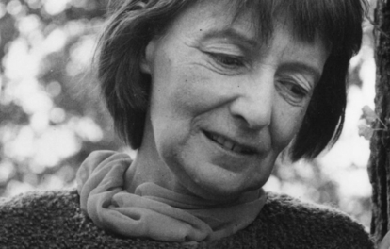
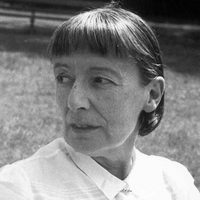
Florence Margaret Smith, known as Stevie Smith (20 September 1902– 7 March 1971) was an English poet and novelist. Life Stevie Smith, born Florence Margaret Smith in Kingston upon Hull, was the second daughter of Ethel and Charles Smith. She was called “Peggy” within her family, but acquired the name “Stevie” as a young woman when she was riding in the park with a friend who said that she reminded him of the jockey Steve Donoghue. Her father was a shipping agent, a business that he had inherited from his father. As the company and his marriage began to fall apart, he ran away to sea and Smith saw very little of her father after that. He appeared occasionally on 24-hour shore leave and sent very brief postcards ("Off to Valparaiso, Love Daddy"). When she was three years old she moved with her mother and sister to Palmers Green in North London where Smith would live until her death in 1971. She resented the fact that her father had abandoned his family. Later, when her mother became ill, her aunt Madge Spear (whom Smith called “The Lion Aunt”) came to live with them, raised Smith and her elder sister Molly and became the most important person in Smith’s life. Spear was a feminist who claimed to have “no patience” with men and, as Smith wrote, “she also had 'no patience’ with Hitler”. Smith and Molly were raised without men and thus became attached to their own independence, in contrast to what Smith described as the typical Victorian family atmosphere of “father knows best”. When Smith was five she developed tubercular peritonitis and was sent to a sanatorium near Broadstairs, Kent, where she remained for three years. She related that her preoccupation with death began when she was seven, at a time when she was very distressed at being sent away from her mother. Death and fear fascinated her and provide the subjects of many of her poems. Her mother died when Smith was 16. When suffering from the depression to which she was subject all her life she was so consoled by the thought of death as a release that, as she put it, she did not have to commit suicide. She wrote in several poems that death was “the only god who must come when he is called”. Smith suffered throughout her life from an acute nervousness, described as a mix of shyness and intense sensitivity. In the Poem “A House of Mercy”, she wrote of her childhood house in North London: It was a house of female habitation, Two ladies fair inhabited the house, And they were brave. For although Fear knocked loud Upon the door, and said he must come in, They did not let him in. Smith was educated at Palmers Green High School and North London Collegiate School for Girls. She spent the remainder of her life with her aunt, and worked as private secretary to Sir Neville Pearson with Sir George Newnes at Newnes Publishing Company in London from 1923 to 1953. Despite her secluded life, she corresponded and socialised widely with other writers and creative artists, including Elisabeth Lutyens, Sally Chilver, Inez Holden, Naomi Mitchison, Isobel English and Anna Kallin. After she retired from Sir Neville Pearson’s service following a nervous breakdown she gave poetry readings and broadcasts on the BBC that gained her new friends and readers among a younger generation. Sylvia Plath became a fan of her poetry and sent Smith a letter in 1962, describing herself as “a desperate Smith-addict.” Plath expressed interest in meeting in person but committed suicide soon after sending the letter. Smith was described by her friends as being naive and selfish in some ways and formidably intelligent in others, having been raised by her aunt as both a spoiled child and a resolutely autonomous woman. Likewise, her political views vacillated between her aunt’s Toryism and her friends’ left-wing tendencies. Smith was celibate for most of her life, although she rejected the idea that she was lonely as a result, alleging that she had a number of intimate relationships with friends and family that kept her fulfilled. She never entirely abandoned or accepted the Anglican faith of her childhood, describing herself as a “lapsed atheist”, and wrote sensitively about theological puzzles;"There is a God in whom I do not believe/Yet to this God my love stretches." Her 14-page essay of 1958, “The Necessity of Not Believing”, concludes: “There is no reason to be sad, as some people are sad when they feel religion slipping off from them. There is no reason to be sad, it is a good thing.” Smith died of a brain tumour on 7 March 1971. Her last collection, Scorpion and other Poems was published posthumously in 1972, and the Collected Poems followed in 1975. Three novels were republished and there was a successful play based on her life, Stevie, written by Hugh Whitemore. It was filmed in 1978 by Robert Enders and starred Glenda Jackson and Mona Washbourne. Fiction Smith wrote three novels, the first of which, Novel on Yellow Paper, was published in 1936. Apart from death, common subjects in her writing include loneliness; myth and legend; absurd vignettes, usually drawn from middle-class British life, war, human cruelty and religion. All her novels are lightly fictionalised accounts of her own life, which got her into trouble at times as people recognised themselves. Smith said that two of the male characters in her last book are different aspects of George Orwell, who was close to Smith. There were rumours that they were lovers; he was married to his first wife at the time. Novel on Yellow Paper (Cape, 1936) Smith’s first novel is structured as the random typings of a bored secretary, Pompey. She plays word games, retells stories from classical and popular culture, remembers events from her childhood, gossips about her friends and describes her family, particularly her beloved Aunt. As with all Smith’s novels, there is an early scene where the heroine expresses feelings and beliefs which she will later feel significant, although ambiguous, regret for. In Novel on Yellow Paper that belief is anti-Semitism, where she feels elation at being the “only Goy” at a Jewish party. This apparently throwaway scene acts as a timebomb, which detonates at the centre of the novel when Pompey visits Germany as the Nazis are gaining power. With horror, she acknowledges the continuity between her feeling “Hurray for being a Goy” at the party and the madness that is overtaking Germany. The German scenes stand out in the novel, but perhaps equally powerful is her dissection of failed love. She describes two unsuccessful relationships, first with the German Karl and then with the suburban Freddy. The final section of the novel describes with unusual clarity the intense pain of her break-up with Freddy. Over the Frontier (Cape, 1938) Smith herself dismissed her second novel as a failed experiment, but its attempt to parody popular genre fiction to explore profound political issues now seems to anticipate post-modern fiction. If anti-Semitism was one of the key themes of Novel on Yellow Paper, Over the Frontier is concerned with militarism. In particular, she asks how the necessity of fighting Fascism can be achieved without descending into the nationalism and dehumanisation that fascism represents. After a failed romance the heroine, Pompey, suffers a breakdown and is sent to Germany to recuperate. At this point the novel changes style radically, as Pompey becomes part of an adventure/spy yarn in the style of John Buchan or Dornford Yates. As the novel becomes increasingly dreamlike, Pompey crosses over the frontier to become a spy and soldier. If her initial motives are idealistic, she becomes seduced by the intrigue and, ultimately, violence. The vision Smith offers is a bleak one: “Power and cruelty are the strengths of our lives, and only in their weakness is there love.” The Holiday (Chapman and Hall, 1949) Smith’s final novel is her own favourite, and most fully realised. It is concerned with personal and political malaise in the immediate post-war period. Most of the characters are either employed in the army or civil service in post-war reconstruction, and its heroine, Celia, works for the Ministry as a cryptographer and propagandist. The Holiday describes a series of hopeless relationships. Celia and her cousin Caz are in love, but cannot pursue their affair since it is believed that, because of their parents’ adultery, they are half-brother and sister. Celia’s other cousin Tom is in love with her, Basil is love with Tom, Tom is estranged from his father, Celia’s beloved Uncle Heber, who pines for a reconciliation; and Celia’s best friend Tiny longs for the married Vera. These unhappy, futureless but intractable relationships are mirrored by the novel’s political concerns. The unsustainability of the British Empire and the uncertainty over Britain’s post-war role are constant themes, and many of the characters discuss their personal and political concerns as if they were seamlessly linked. Caz is on leave from Palestine and is deeply disillusioned, Tom goes mad during the war, and it is telling that the family scandal that blights Celia and Caz’s lives took place in India. Just as Pompey’s anti-semitism was tested in Novel on Yellow Paper, so Celia’s traditional nationalism and sentimental support for colonialism is challenged throughout The Holiday. Poetry Smith’s first volume of poetry, the self-illustrated A Good Time Was Had By All, was published in 1937 and established her as a poet. Soon her poems were found in periodicals. Her style was often very dark; her characters were perpetually saying “goodbye” to their friends or welcoming death. At the same time her work has an eerie levity and can be very funny though it is neither light nor whimsical. “Stevie Smith often uses the word 'peculiar’ and it is the best word to describe her effects” (Hermione Lee). She was never sentimental, undercutting any pathetic effects with the ruthless honesty of her humour. “A good time was had by all” itself became a catch phrase, still occasionally used to this day. Smith said she got the phrase from parish magazines, where descriptions of church picnics often included this phrase. This saying has become so familiar that it is recognised even by those who are unaware of its origin. Variations appear in pop culture, including “Being for the Benefit of Mr. Kite!” by the Beatles. Though her poems were remarkably consistent in tone and quality throughout her life, their subject matter changed over time, with less of the outrageous wit of her youth and more reflection on suffering, faith and the end of life. Her best-known poem is “Not Waving but Drowning”. She was awarded the Cholmondeley Award for Poets in 1966 and won the Queen’s Gold Medal for poetry in 1969. She published nine volumes of poems in her lifetime (three more were released posthumously).
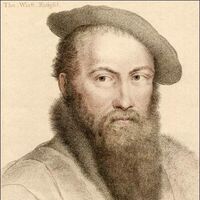
Sir Thomas Wyatt (1503 – 11 October 1542) was a 16th-century English lyrical poet credited with introducing the sonnet into English. He was born at Allington Castle, near Maidstone in Kent – though his family was originally from Yorkshire. His mother was Anne Skinner and his father, Henry Wyatt, had been one of Henry VII's Privy Councillors, and remained a trusted adviser when Henry VIII came to the throne in 1509. In his turn, Thomas Wyatt followed his father to court after his education at St John's College, Cambridge. None of Wyatt's poems were published during his lifetime—the first book to feature his verse was printed a full fifteen years after his death. Education and diplomatic career Wyatt was over six feet tall, reportedly both handsome and physically strong. Wyatt was not only a poet, but also an ambassador in the service of Henry VIII. He first entered Henry's service in 1515 as 'Sewer Extraordinary', and the same year he began studying at St John's College of the University of Cambridge. He married Elizabeth Brooke (1503–1550), the sister of George Brooke, 9th Baron Cobham, in 1522, and a year later she gave birth to a son, Thomas Wyatt, the younger, who led Wyatt's rebellion many years after his father's death. In 1524 Henry VIII assigned Wyatt to be an Ambassador at home and abroad, and some time soon after he separated from his wife on the grounds of adultery. He accompanied Sir John Russell, 1st Earl of Bedford to Rome to help petition Pope Clement VII to annul the marriage of Henry VIII to his first wife, Catherine of Aragon, an embassy whose goal was to make Henry free to marry Anne Boleyn. According to some, Wyatt was captured by the armies of Emperor Charles V when they captured Rome and imprisoned the Pope in 1527 but managed to escape and then made it back to England. In 1535 Wyatt was knighted and appointed High Sheriff of Kent for 1536. In December 1541 he was elected knight of the shire (M.P.) for Kent. Wyatt's poetry and influence Wyatt's professed object was to experiment with the English tongue, to civilise it, to raise its powers to those of its neighbours. Although a significant amount of his literary output consists of translations of sonnets by the Italian poet Petrarch, he wrote sonnets of his own. Wyatt's sonnets first appeared in Tottle's Miscellany, now on exhibit in the British Library in London. In addition to imitations of works by the classical writers Seneca and Horace, he experimented in stanza forms including the rondeau, epigrams, terza rima, ottava rima songs, satires and also with monorime, triplets with refrains, quatrains with different length of line and rhyme schemes, quatrains with codas, and the French forms of douzaine and treizaine in addition to introducing contemporaries to his poulter's measure form (Alexandrine couplets of twelve syllable iambic lines alternating with a fourteener, fourteen syllable line). and is acknowledged a master in the iambic tetrameter. While Wyatt's poetry reflects classical and Italian models, he also admired the work of Chaucer and his vocabulary reflects Chaucer’s (for example, his use of Chaucer’s word newfangleness, meaning fickle, in They flee from me that sometime did me seek). His best-known poems are those that deal with the trials of romantic love. Others of his poems were scathing, satirical indictments of the hypocrisies and flat-out pandering required of courtiers ambitious to advance at the Tudor court. Wyatt was one of the earliest poets of the Renaissance. He was responsible for many innovations in English poetry. He, along with Surrey, introduced the sonnet from Italy into England. His lyrics show great tenderness of feeling and purity of diction. He is one of the originators of the convention in love poetry according to which the mistress is painted as hard-hearted and cruel. Attribution The Egerton Manuscript, originally an album containing Wyatt's personal selection of his poems and translations, preserves 123 texts, partly in the poet's hand. Tottel's Miscellany (1557), the Elizabethan anthology which created Wyatt's posthumous reputation, ascribes 96 poems to him, (33 not extant in the Egerton Manuscript). These 156 poems can be ascribed to Wyatt with certainty, on the basis of objective evidence. Another 129 poems have been ascribed to Wyatt purely on the basis of subjective editorial judgment. They derive mostly from two Tudor manuscript anthologies, the Devonshire and Blage manuscripts. R A Rebholz in his preface to Sir Thomas Wyatt, The Complete Poems, comments, 'the problem of determining which poems Wyatt wrote is as yet unsolved'. However, as Richard Harrier's The Canon of Sir Thomas Wyatt's Poetry (1975) shows, the problem of determining which poems aren't Wyatt's is much simpler. Harrier examines the documentary evidence of the manuscripts (handwritings, organization, etc.) and establishes that there is insufficient textual warrant for assigning any of these poems to Wyatt. The only basis for ascribing these poems to Wyatt resides in editorial evaluation of their style and poetic merits. Compared with the indubitable standard presented in Wyatt's 156 unquestionably ascribable poems, fewer than 30 of these 129 poems survive scrutiny. Most can be dismissed at once. The best edition of Wyatt thus far is Joost Daalder's (1975). It presents 199 poems, including 25 misascriptions (mostly segregated as "Unascribed") and is missing a dozen poems likely to be Wyatt's. A new edition of this major poet, the inventor of lyric poetry in Modern English, is urgently needed. Assessment Critical opinions of his work have varied widely. Thomas Warton, the eighteenth century critic, considered Wyatt 'confessedly an inferior' to his contemporary Henry Howard, Earl of Surrey and that Wyatt's 'genius was of the moral and didactic species and be deemed the first polished English satirist'. The 20th century saw an awakening in his popularity and a surge in critical attention. C. S. Lewis called him ‘the father of the Drab Age’ (i.e. the unornate), from what Lewis calls the 'golden' age of the 16th century, while others see his love poetry, with its complex use of literary conceits, as anticipating that of the metaphysical poets in the next century. More recently, the critic Patricia Thomson, describes Wyatt as "the Father of English Poetry” Rumored affair with Anne Boleyn Many legends and conjectures have grown up around the notion that the young, unhappily married Wyatt fell in love with the young Anne Boleyn in the early-to-mid 1520s. The exact nature of their relationship remains uncertain today. Their acquaintance is certain. However, whether or not the two shared a romantic relationship is unknown to this day. Nineteenth-century critic Rev. George Gilfillan implies that Wyatt and Boleyn were romantically connected. To quote a modern historian "that they did look into each others eyes, and felt that to each other they were all too lovely.." is a quite possible scenario. In his poetry, Thomas calls his mistress Anna, and often embeds pieces of information that correspond with her life into his poetry. "And now I follow the coals that be quent, From Dover to Calais against my mind..." These lines could refer to Anne's trip to France in 1532 right before her marriage to Henry VIII. This could imply that Thomas followed her to France to try and persuade her otherwise or merely to be with her. Later in his life, Thomas writes, while referring to a woman, "Graven in diamonds with letters plain, There is written her fair neck round about, Noli me tangere, Caesar's, I am;" This shows Wyatt's obvious attraction to a royal lady. According to his grandson George Wyatt, who wrote a biography of Anne Boleyn many years after her death, the moment Thomas Wyatt had seen "this new beauty" on her return from France in winter 1522 he had fallen in love with her. When she attracted King Henry VIII's attentions sometime around 1525, Wyatt was the last of Anne's other suitors to be ousted by the king. According to Wyatt's grandson, after an argument over her during a game of bowls with the King, Wyatt was sent on, or himself requested, a diplomatic mission to Italy. Imprisonment on charges of adultery In May 1536 Wyatt was imprisoned in the Tower of London for allegedly committing adultery with Anne Boleyn. He was released from the Tower later that year, thanks to his friendship or his father's friendship with Thomas Cromwell, and he returned to his duties. During his stay in the Tower he may have witnessed not only the execution of Anne Boleyn (May 19, 1536) from his cell window but also the prior executions of the five men with whom she was accused of adultery. Wyatt is known to have written a poem inspired by the experience, which, though it stays clear of declaring the executions groundless, expresses grief and shock. In the 1530s, he wrote poetry in the Devonshire MS declaring his love for a woman; employing the basic acrostic formula, the first letter of each line spells out SHELTUN. A reply is written underneath it, signed by Mary Shelton, rejecting him. Mary, Anne Boleyn's first cousin, had been the mistress of Henry VIII between February and August 1535. In 1540 he was again in favor, as evident by the fact that he was granted the site and many of the manorial estates of the dissolved Boxley Abbey. However, in 1541 he was charged again with treason and the charges were again lifted—though only thanks to the intervention of Henry's fifth wife, then-Queen Catherine Howard, and upon the condition of reconciling with his adulterous wife. He was granted a full pardon and restored once again to his duties as ambassador. After the execution of Catherine Howard, there were rumours that Wyatt's wife, Elizabeth, was a possibility for wife number six, despite the fact that she was still married to Wyatt. He became ill not long after, and died on 11 October 1542 around the age of 39, while staying with his friend Sir John Horsey at Clifton Maybank House in Dorset. He is buried in nearby Sherborne Abbey. Descendants and relatives Long after Thomas Wyatt's death, his only son, Thomas Wyatt the younger, led a thwarted rebellion against Henry's daughter, Queen Mary I, for which he was executed. The rebellion's aim was to set the Protestant-minded Elizabeth, the daughter of Anne Boleyn, on the throne. His sister Margaret Wyatt was the mother of Henry Lee of Ditchley, from whom descend the Lees of Virginia, including Robert E. Lee. Thomas Wyatt's great grandson was Virginia Governor Francis Wyatt. References Wikipedia - http://en.wikipedia.org/wiki/Thomas_Wyatt_(poet)

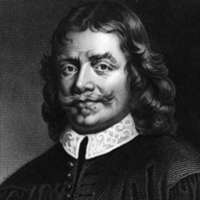
John Bunyan (/ˈbʌnjən/; baptised 30 November 1628– 31 August 1688) was an English writer and Baptist preacher best remembered as the author of the Christian allegory The Pilgrim’s Progress. In addition to The Pilgrim’s Progress, Bunyan wrote nearly sixty titles, many of them expanded sermons. Bunyan came from the village of Elstow, near Bedford. He had some schooling and at the age of sixteen joined the Parliamentary army during the first stage of the English Civil War. After three years in the army he returned to Elstow and took up the trade of tinker, which he had learned from his father. He became interested in religion after his marriage, attending first the parish church and then joining the Bedford Meeting, a nonconformist group in Bedford, and becoming a preacher. After the restoration of the monarch, when the freedom of nonconformists was curtailed, Bunyan was arrested and spent the next twelve years in jail as he refused to undertake to give up preaching. During this time he wrote a spiritual autobiography, Grace Abounding to the Chief of Sinners, and began work on his most famous book, The Pilgrim’s Progress, which was not published until some years after his release. Bunyan’s later years, in spite of another shorter term of imprisonment, were spent in relative comfort as a popular author and preacher, and pastor of the Bedford Meeting. He died aged 59 after falling ill on a journey to London and is buried in Bunhill Fields. The Pilgrim’s Progress became one of the most published books in the English language; 1,300 editions having been printed by 1938, 250 years after the author’s death. He is remembered in the Church of England with a Lesser Festival on 30 August, and on the liturgical calendar of the United States Episcopal Church on 29 August. Some other churches of the Anglican Communion, such as the Anglican Church of Australia, honour him on the day of his death (31 August). Early life John Bunyan was born in 1628 to Thomas and Margaret Bunyan at Bunyan’s End in the parish of Elstow, Bedfordshire. Bunyan’s End is located about half-way between the hamlet of Harrowden (one mile south-east of Bedford) and Elstow High Street. Bunyan’s date of birth is not known, but he was baptised on 30 November 1628, the baptismal entry in the parish register reading "John the sonne of Thomas Bunnion Jun., the 30 November". The name Bunyan was spelt in many different ways (there are 34 variants in Bedfordshire Record Office) and had its origins in the Norman-French name Buignon. There had been Bunyans in north Bedfordshire since at least 1199. Bunyan’s father was a brazier or tinker who travelled around the area mending pots and pans, and his grandfather had been a chapman or small trader. The Bunyans also owned land in Elstow, so Bunyan’s origins were not quite as humble as he suggested in his autobiographical work Grace Abounding to the Chief of Sinners when he wrote that his father’s house was “of that rank that is meanest and most despised in the country”. As a child Bunyan learnt his father’s trade of tinker and was given some rudimentary schooling. In Grace Abounding Bunyan recorded few details of his upbringing, but he did note how he picked up the habit of swearing (from his father), suffered from nightmares, and read the popular stories of the day in cheap chap-books. In the summer of 1644 Bunyan lost both his mother and his sister Margaret. That autumn, shortly before or after his sixteenth birthday, Bunyan enlisted in the Parliamentary army when an edict demanded 225 recruits from the town of Bedford. There are few details available about his military service, which took place during the first stage of the English Civil War. A muster roll for the garrison of Newport Pagnell shows him as private “John Bunnian”. In Grace Abounding, he recounted an incident from this time, as evidence of the grace of God: “When I was a Soldier I, with others were drawn out to go to such a place to besiege it; But when I was just ready to go, one of the company desired to go in my room, to which, when I had consented, he took my place; and coming to the siege, as he stood Sentinel, he was shot into the head with a Musket bullet and died.” Bunyan’s army service provided him with a knowledge of military language which he then used in his book The Holy War, and also exposed him to the ideas of the various religious sects and radical groups he came across in Newport Pagnell. The garrison town also gave him opportunities to indulge in the sort of behaviour he would later confess to in Grace Abounding: “So that until I came to the state of Marriage, I was the very ringleader of all the Youth that kept me company, in all manner of vice and ungodliness”. Bunyan spent nearly three years in the army, leaving in 1647 to return to Elstow and his trade as a tinker. His father had remarried and had more children and Bunyan moved from Bunyan’s End to a cottage in Elstow High Street. Marriage and conversion Within two years of leaving the army, Bunyan married. The name of his wife and the exact date of his marriage are not known, but Bunyan did recall that his wife, a pious young woman, brought with her into the marriage two books that she had inherited from her father: Arthur Dent’s Plain Man’s Pathway to Heaven and Lewis Bayly’s Practice of Piety. He also recalled that, apart from these two books, the newly-weds possessed little: “not having so much household-stuff as a Dish or a Spoon betwixt us both”. The couple’s first daughter, Mary, was born in 1650, and it soon became apparent that she was blind. They would have three more children, Elizabeth, Thomas and John. By his own account, Bunyan had as a youth enjoyed bell-ringing, dancing and playing games including on Sunday, thought by many to be the Sabbath, which was forbidden by the Puritan regime. One Sunday the vicar of Elstow preached a sermon against Sabbath breaking, and Bunyan took this sermon to heart. That afternoon, as he was playing tip-cat (a game in which a small piece of wood is hit with a bat) on Elstow village green, he heard a voice from the heavens “Wilt thou leave thy sins, and go to Heaven? Or have thy sins, and go to Hell?” The next few years were a time of intense spiritual conflict for Bunyan as he struggled with his doubts and fears over religion and guilt over what he saw as his state of sin. During this time Bunyan, whilst on his travels as a tinker, happened to be in Bedford and pass a group of women who were talking about spiritual matters on their doorstep. The women were in fact some of the founding members of the Bedford Free Church or Meeting and Bunyan, who had been attending the parish church of Elstow, was so impressed by their talk that he joined their church. At that time the nonconformist group was meeting in St John’s church in Bedford under the leadership of former Royalist army officer John Gifford. At the instigation of other members of the congregation Bunyan began to preach, both in the church and to groups of people in the surrounding countryside. In 1656, having by this time moved his family to St Cuthbert’s Street in Bedford, he published his first book, Gospel Truths Opened, which was inspired by a dispute with Quakers. In 1658 Bunyan’s wife died, leaving him with four small children, one of them blind. A year later he married an eighteen-year-old woman called Elizabeth. Imprisonment The religious tolerance which had allowed Bunyan the freedom to preach became curtailed with the restoration of the monarchy in 1660. The members of the Bedford Meeting were no longer able to meet in St John’s church, which they had been sharing with the Anglican congregation. That November, Bunyan was preaching at Lower Samsell, a farm near the village of Westoning, thirteen miles from Bedford, when he was warned that a warrant was out for his arrest. Deciding not to make an escape, he was arrested and brought before the local magistrate Sir Francis Wingate, at Harlington House. The Act of Uniformity, which made it compulsory for preachers to be ordained by an Anglican bishop and for the revised Book of Common Prayer to be used in church services, was still two years away, and the Act of Conventicles, which made it illegal to hold religious meetings of five or more people outside the Church of England was not passed until 1664. Bunyan was arrested under the Conventicle Act of 1593, which made it an offence to attend a religious gathering other than at the parish church with more than five people outside their family. The offence was punishable by 3 months imprisonment followed by banishment or execution if the person then failed to promise not to re-offend. The Act had been little used, and Bunyan’s arrest was probably due in part to concerns that non-conformist religious meetings were being held as a cover for people plotting against the king (although this was not the case with Bunyan’s meetings). The trial of Bunyan took place in January 1661 at the quarter sessions in Bedford, before a group of magistrates under John Kelynge, who would later help to draw up the Act of Uniformity. Bunyan, who had been held in prison since his arrest, was indicted of having “devilishly and perniciousy abstained from coming to church to hear divine service” and having held “several unlawful meetings and conventicles, to the great disturbance and distraction of the good subjects of this kingdom”. He was sentenced to three months imprisonment with transportation to follow if at the end of this time he didn’t agree to attend the parish church and desist from preaching. As Bunyan refused to agree to give up preaching, his period of imprisonment eventually extended to 12 years and brought great hardship to his family. Elizabeth, who made strenuous attempts to obtain his release, had been pregnant when her husband was arrested and she subsequently gave birth prematurely to a still-born child. Left to bring up four step-children, one of whom was blind, she had to rely on the charity of Bunyan’s fellow members of the Bedford Meeting and other supporters and on what little her husband could earn in gaol by making shoelaces. But Bunyan remained resolute: “O I saw in this condition I was a man who was pulling down his house upon the head of his Wife and Children; yet thought I, I must do it, I must do it”. Bunyan spent his 12 years’ imprisonment in Bedford County Gaol, which stood on the corner of the High Street and Silver Street. There were however occasions when he was allowed out of prison, depending on the gaolers and the mood of the authorities at the time, and he was able to attend the Bedford Meeting and even preach. His daughter Sarah was born during his imprisonment (the other child of his second marriage, Joseph, was born after his release in 1672). In prison, Bunyan had a copy of the Bible and of John Foxe’s Book of Martyrs, as well as writing materials. He also had at times the company of other preachers who had been imprisoned. It was in Bedford Gaol that he wrote Grace Abounding and started work on The Pilgrim’s Progress, as well as penning several tracts that may have brought him a little money. In 1671, while still in prison, he was chosen as pastor of the Bedford Meeting. By that time there was a mood of increasing religious toleration in the country and in March 1672 the king issued a declaration of indulgence which suspended penal laws against nonconformists. Thousands of nonconformists were released from prison, amongst them Bunyan and five of his fellow inmates of Bedford Gaol. Bunyan was freed in May 1672 and immediately obtained a licence to preach under the declaration of indulgence. Later life Following his release from gaol in 1672 Bunyan probably did not return to his former occupation of tinker. Instead he devoted his time to writing and preaching. He continued as pastor of the Bedford Meeting and travelled over Bedfordshire and adjoining counties on horseback to preach, becoming known affectionately as “Bishop Bunyan”. His preaching also took him to London, where Lord Mayor Sir John Shorter became a friend and presented him with a silver-mounted walking stick. The Pilgrim’s Progress was published in 1678 by Nathaniel Ponder and immediately became popular, though probably making more money for its publisher than for its author. Two events marred Bunyan’s life during the later 1670s. Firstly he became embroiled in a scandal concerning a young woman called Agnes Beaumont. When going to preach in Gamlingay in 1674 he allowed Beaumont, a member of the Bedford Meeting, to ride pillion on his horse, much to the anger of her father, who then died suddenly. His daughter was initially suspected of poisoning him, though the coroner found he had died of natural causes. And then in 1676-7 he underwent a second term of imprisonment, probably for refusing to attend the parish church. In 1688, on his way to London, Bunyan made a detour to Reading, Berkshire, to try and resolve a quarrel between a father and son. Continuing to London to the house of his friend, grocer John Strudwick of Snow Hill in the City of London, he was caught in a storm and fell ill with a fever. He died in Strudwick’s house on the morning of 31 August 1688 and was buried in the tomb belonging to Strudwick in Bunhill Fields nonconformist burial ground in London. Bunyan’s estate at his death was worth £42 19s 0d. His widow Elizabeth died in 1691. Works * Between 1656 when he published his first work, Some Gospel Truths Opened (a tract against the Quakers), and his death in 1688, Bunyan published 42 titles. A further two works, including his Last Sermon, were published the following year by George Larkin. In 1692 Southwark comb-maker Charles Doe, who was a friend of Bunyan’s later years, brought out, with the collaboration of Bunyan’s widow, a collection of the author’s works, including 12 previously unpublished titles, mostly sermons. Six years later Doe published The Heavenly Footman and finally in 1765 Relation of My Imprisonment was published, giving a total of 58 published titles. * It is the allegory The Pilgrim’s Progress, written during Bunyan’s twelve-year imprisonment although not published until 1678 six years after his release, that made Bunyan’s name as an author with its immediate success. It remains the book for which Bunyan is best remembered. The images Bunyan uses in The Pilgrim’s Progress are reflections of images from his own world; the strait gate is a version of the wicket gate at Elstow Abbey church, the Slough of Despond is a reflection of Squitch Fen, a wet and mossy area near his cottage in Harrowden, the Delectable Mountains are an image of the Chiltern Hills surrounding Bedfordshire. Even his characters, like the Evangelist as influenced by John Gifford, are reflections of real people. Further allegorical works were to follow: The Life and Death of Mr. Badman (1680), Pilgrim’s Progress Part II, and The Holy War (1682). Grace Abounding to the Chief of Sinners, a spiritual autobiography was published in 1666, when he was still in jail. Adaptations * In March, 2015 Director Darren Wilson announced a Kickstarter campaign to produce a full-length feature film based on The Pilgrims Progress called Heaven Quest: A Pilgrim’s Progress Movie. Memorials * In 1862 a recumbent statue was created to adorn Bunyan’s grave, and restored in 1922. * In 1874, a bronze statue of John Bunyan, sculpted by Sir Joseph Edgar Boehm, was erected in Bedford. This stands at the south-western corner of St Peter’s Green, facing down Bedford’s High Street. The site was chosen by Boehm for its significance as a crossroads. Bunyan is depicted expounding the Bible, to an invisible congregation, with a broken fetter representing his imprisonment by his left foot. There are three scenes from “The Pilgrim’s Progress” on the stone plinth: Christian at the wicket gate; his fight with Apollyon; and losing his burden at the foot of the cross of Jesus. The statue was unveiled by Lady Augusta Stanley, wife of the Dean of Westminster, on Wednesday 10 June 1874. In 1876 the Duke of Bedford gave bronze doors by Frederick Thrupp depicting scenes from The Pilgrim’s Progress to the Bunyan Meeting (the former Bedford Meeting which had been renamed in Bunyan’s honour). * There is another statue of him in Kingsway, London, and there are memorial windows in Westminster Abbey, Southwark Cathedral and various churches, including Elstow Abbey (the parish church of Elstow) and the Bunyan Meeting Free Church in Bedford. * Bunyan is remembered in the Church of England with a Lesser Festival on 30 August, and on the liturgical calendar of the United States Episcopal Church on 29 August. Some other churches of the Anglican Communion, such as the Anglican Church of Australia, honour him on the day of his death (31 August). Legacy * Bunyan is best remembered for The Pilgrim’s Progress, a book which gained immediate popularity. By 1692, four year’s after the author’s death, publisher Charles Doe estimated that 100,000 copies had been printed in England, as well as editions “in France, Holland, New England and Welch”. By 1938, 250 years after Bunyan’s death, more than 1,300 editions of the book had been printed. * During the 18th century Bunyan’s unpolished style fell out of favour, but his popularity returned with Romanticism, poet Robert Southey writing an appreciative biography in 1830. Bunyan’s reputation was further enhanced by the evangelical revival and he became a favourite author of the Victorians. The tercentenary of Bunyan’s birth, celebrated in 1928, elicited praise from his former adversary, the Church of England. Although popular interest in Bunyan waned during the second half of the twentieth century, academic interest in the writer has increased and Oxford University Press brought out a new edition of his works, beginning in 1976. Authors who have been influenced by Bunyan include Nathaniel Hawthorne, Herman Melville, Charles Dickens, Louisa May Alcott and George Bernard Shaw. * Bunyan’s work, in particular The Pilgrim’s Progress, has reached a wider audience through stage productions, film, TV, and radio. An opera by Ralph Vaughan Williams based on The Pilgrim’s Progress was first performed at the Royal Opera House in 1951 as part of the Festival of Britain and revived in 2012 by the English National Opera. * John Bunyan had six children, five of whom are known to have married, of which four had children. Moot Hall Museum (in Elstow) has a record of John’s descendants, down to the nineteenth century but as of September 2013, no verifiable trace of later descendants has been found. Selected bibliography * * Among Bunyan’s many works: References Wikipedia—https://en.wikipedia.org/wiki/John_Bunyan
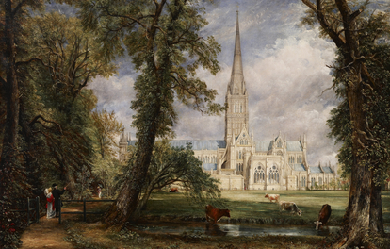
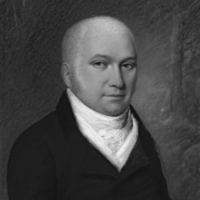
Thomas Lovell Beddoes (30 June 1803– 26 January 1849) was an English poet, dramatist and physician. Biography Born in Clifton, Bristol, England, he was the son of Dr. Thomas Beddoes, a friend of Samuel Taylor Coleridge, and Anna, sister of Maria Edgeworth. He was educated at Charterhouse and Pembroke College, Oxford. He published in 1821 The Improvisatore, which he afterwards endeavoured to suppress. His next venture, a blank-verse drama called The Bride’s Tragedy (1822), was published and well reviewed, and won for him the friendship of Barry Cornwall. Beddoes’ work shows a constant preoccupation with death. In 1824, he went to Göttingen to study medicine, motivated by his hope of discovering physical evidence of a human spirit which survives the death of the body. He was expelled, and then went to Würzburg to complete his training. He then wandered about practising his profession, and expounding democratic theories which got him into trouble. He was deported from Bavaria in 1833, and had to leave Zürich, where he had settled, in 1840. He continued to write, but published nothing. He led an itinerant life after leaving Switzerland, returning to England only in 1846, before going back to Germany. He became increasingly disturbed, and committed suicide by poison at Basel, in 1849, at the age of 45. For some time before his death he had been engaged on a drama, Death’s Jest Book, which was published in 1850 with a memoir by his friend, T. F. Kelsall. His Collected Poems were published in 1851. Evaluation Critics have faulted Beddoes as a dramatist. According to Arthur Symons, “of really dramatic power he had nothing. He could neither conceive a coherent plot, nor develop a credible situation.” His plots are convoluted, and such was his obsession with the questions posed by death that his characters lack individuation; they all struggle with the same ideas that vexed Beddoes. But his poetry is “full of thought and richness of diction”, in the words of John William Cousin, who praised Beddoes’ short pieces such as “If thou wilt ease thine heart” (from Death’s Jest-Book, Act II) and “If there were dreams to sell” ("Dream-Pedlary") as “masterpieces of intense feeling exquisitely expressed”. Lytton Strachey referred to Beddoes as “the last Elizabethan”, and said that he was distinguished not for his “illuminating views on men and things, or for a philosophy”, but for the quality of his expression. Philip B. Anderson said the lyrics of Death’s Jest Book, exemplified by “Sibylla’s Dirge” and “The Swallow Leaves Her Nest”, are “Beddoes’ best work. These lyrics display a delicacy of form, a voluptuous horror, an imagistic compactness and suggestiveness, and, occasionally, a grotesque comic power that are absolutely unique.” References Wikipedia—https://en.wikipedia.org/wiki/Thomas_Lovell_Beddoes

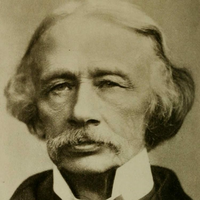
Coventry Kersey Dighton Patmore (23 July 1823– 26 November 1896) was an English poet and critic best known for The Angel in the House, his narrative poem about an ideal happy marriage. The eldest son of author Peter George Patmore, Coventry Patmore was born at Woodford in Essex and was privately educated. He was his father’s intimate and constant companion and inherited from him his early literary enthusiasm. It was Coventry’s ambition to become an artist. He showed much promise, earning the silver palette of the Society of Arts in 1838. In 1839 he was sent to school in France for six months, where he began to write poetry. On his return, his father planned to publish some of these youthful poems; Coventry however had become interested in science, and poetry was set aside.


John Wilbye (baptized 7 March 1574– September 1638) was an English madrigal composer. Life The son of a tanner, he was born at Brome, Suffolk, near Diss, and received the patronage of the Cornwallis family of Brome Hall. Wilbye was employed for decades at Hengrave Hall, near Bury St. Edmunds, where he seems to have been recruited in the 1590s by Elizabeth Cornwallis who was married to the property’s owner, Sir Thomas Kitson (or Kytson). The Kitsons also had a long association with the composer Edward Johnson, who was more than twenty years older than Wilbye, and began working at Hengrave in the 1570s. As well as working in Suffolk, Wilbye was involved with the music scene in London, where the Kitsons kept a town house (first in Austin Friars and from about 1601 in Clerkenwell). His first book of madrigals was published in London in 1598, the madrigals being described as “newly composed”. The publication was dedicated to Sir Charles Cavendish, whose first wife had been a Kitson. Wilbye remained in contact with his printer Thomas Easte. In 1600 Wilbye and Edward Johnson took on a proofreading job for Easte, the first edition of Dowland’s Second Book of Songs, as Dowland was abroad. Easte died in 1608, and Wilbye’s second book of madrigals was printed the following year by Easte’s nephew and successor, Thomas Snodham. Wilbye never married. In 1628, on Lady Kitson’s death, all the furnishings, books, and musical instruments at Hengrave Hall were settled by her will upon the new owners of the house, first on her daughter Mary Darcy and then upon her granddaughter Penelope. However, Wilbye left Hengrave to live in retirement at Mary Darcy’s house in Colchester, where he died. He is buried in the graveyard of Holy Trinity Church, in Colchester town centre. (The building is currently the CO1 cafe and Young Christian Centre.) Compositions Hengrave was a recusant household, but little religious music by Wilbye survives, and even less keyboard music (one piece in Clement Matchett’s Virginal Book). His main interest seems to have been madrigals. A set of madrigals by him appeared in 1598, and a second in 1608, the two sets containing sixty-four pieces. Wilbye is probably the most famous of all the English madrigalists; his pieces have long been favourites and are often included in modern collections. His madrigals include Weep, weep mine eyes, Weep, O mine eyes and Draw on, sweet night. He also wrote the poem, Love not me for comely grace. His style is characterized by delicate writing for the voice, acute sensitivity to the text and the use of “false relations” between the major and minor modes. References Wikipedia—https://en.wikipedia.org/wiki/John_Wilbye

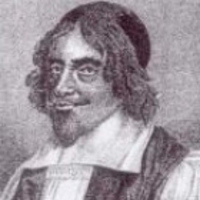
Henry King (1592– 30 September 1669) was an English poet and bishop. Life The older son of John King, Bishop of London, and his wife Joan Freeman, he was baptised at Worminghall, Buckinghamshire, 16 January 1592. He was educated at Lord Williams’s School, Westminster School and in 1608 became a student of Christ Church, Oxford. With his brother John King he matriculated 20 January 1609, and was admitted (19 June 1611 and 7 July 1614) to the degrees of bachelor and master of arts. On 24 January 1616 he was collated to the prebend of St. Pancras in St. Paul’s Cathedral, receiving at the same time the office of penitentiary or confessor in the cathedral, together with the rectory and patronage of Chigwell, Essex. He was made archdeacon of Colchester on 10 April 1617, and soon afterwards received the sinecure rectory of Fulham, in addition to being appointed one of the royal chaplains. All these preferments he held until he was advanced to the episcopal bench. Late in 1617 he preached a sermon at Paul’s Cross. About this time King married Anne, eldest daughter of Robert Berkeley, esq., and granddaughter of Sir Maurice Berkeley. There were four or five children of the marriage, but only two survived. His wife died about 1624, and was buried in St. Paul’s Cathedral, aged just 23. He was a close friend of John Donne, who made him one of his executors, and presented him with his sermons in manuscript, and notes from his reading on over 1400 authors. Other friends were Ben Jonson, George Sandys, Sir Henry Blount, and James Howell. His friendship with Izaak Walton began about 1634, and was lifelong. After his father’s death, on Good Friday 1621, a rumour circulated that he had died in communion with the church of Rome. This was the subject of a two pamphlets attributed to Richard Broughton and George Musket. King preached a sermon refuting this claim on 25 November 1621. He was made canon of Christ Church 3 March 1624, and his brother John was made canon in the following August. On 19 May 1625 they were admitted to the degrees of B.D. and D.D. On 6 February 1639 he was made dean of Rochester, and on 6 February 1642, the day after the House of Lords had passed the bill to deprive the bishops of their votes, he became Bishop of Chichester; he was also presented to the rectory of Petworth in Sussex. He was residing at his episcopal palace when Chichester surrendered to the parliament in 1643, and his library was seized. He was deprived of the rectory of Petworth, which was given by parliament to Francis Cheynell, and by a resolution of the House of Commons, 27 June 1643, his estates were ordered to be sequestrated. From 1643 to 1651 he lived in the house of his brother-in-law, Sir Richard Hobart of Langley, Buckinghamshire. Shortly afterwards King retired to Ritchings, near Langley, the residence of Lady Anne Salter (supposed to be the sister of Brian Duppa, where other members of the King family and John Hales of Eton found refuge. In 1659 King was engaged in negotiations for supplying the vacant bishoprics, and was reinstated at the Restoration, returning to Chichester. On 20 May 1661 he preached at Whitehall, and on 24 April 1662 he delivered an impressive funeral sermon on Bishop Duppa at Westminster Abbey. King died at Chichester 30 September 1669, and was buried in Chichester Cathedral, where the widow of his son John erected a monument to his memory and that of her husband. His second son, Henry, died 21 February 1669; his eldest son, John, died 10 March 1671. Works * King wrote many elegies on royal persons and on his private friends, who included John Donne and Ben Jonson. A selection from his Poems and Psalms was published in 1843. References Wikipedia—https://en.wikipedia.org/wiki/Henry_King_(poet)

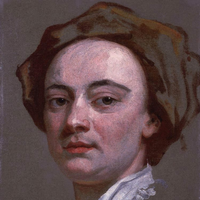
John Gay (/ɡeɪ/; 30 June 1685– 4 December 1732) was an English poet and dramatist and member of the Scriblerus Club. He is best remembered for The Beggar’s Opera (1728), a ballad opera. The characters, including Captain Macheath and Polly Peachum, became household names. Early life Gay was born in Barnstaple, England, and was educated at the town’s grammar school. On leaving school he was apprenticed to a silk mercer in London, but being weary, according to Samuel Johnson, “of either the restraint or the servility of his occupation”, he soon returned to Barnstaple, where he was educated by his uncle, the Rev. John Hanmer, the Nonconformist minister of the town. He then returned to London. Early career The dedication of his Rural Sports (1713) to Alexander Pope was the beginning of a lasting friendship. In 1714, Gay wrote The Shepherd’s Week, a series of six pastorals drawn from English rustic life. Pope had urged him to undertake this task in order to ridicule the Arcadian pastorals of Ambrose Philips, who had been praised by a short-lived contemporary publication The Guardian, to the neglect of Pope’s claims as the first pastoral writer of the age and the true English Theocritus. Gay’s pastorals achieved this goal and his ludicrous pictures of the English country lads and their loves were found to be entertaining on their own account. Gay had just been appointed secretary to the British ambassador to the court of Hanover through the influence of Jonathan Swift when the death of Anne, Queen of Great Britain, three months later put an end to all his hopes of official employment. In 1715, probably with some help from Pope, he produced What d’ye call it?, a dramatic skit on contemporary tragedy, with special reference to Thomas Otway’s Venice Preserv’d. It left the public so ignorant of its real meaning that Lewis Theobald and Benjamin Griffin published a Complete Key to what d’ye call it to explain it. In 1716 appeared his Trivia, or the Art of Walking the Streets of London, a poem in three books, for which he acknowledged having received several hints from Swift. It contains graphic and humorous descriptions of the London of that period. What is most interesting about the poem, however, is not the fact that it depicts the city with photographic accuracy, but that it acts as a guide to the upper, and upper-middle class walkers of society. In taking a mock-heroic form, Gay’s poem was able to poke fun at the notion of complete reformation of street civility, while also proposing an idea of reform in terms of the attitude towards walking. In January 1717 he produced the comedy, Three Hours After Marriage, which was thought to be grossly indecent (without being amusing) and a failure. He had assistance from Pope and John Arbuthnot, but they allowed it to be assumed that Gay was the sole author. Patrons Gay had numerous patrons, and in 1720 he published Poems on Several Occasions by subscription, taking in £1000 or more. In that year James Craggs, the secretary of state, presented him with some South Sea stock. Gay, disregarding the advice of Pope and others of his friends, invested all his money in South Sea stock, and, holding on to the end of the South Sea Bubble, he lost everything. The shock is said to have made him dangerously ill. His friends did not fail him at this juncture. He had patrons in William Pulteney, afterwards Earl of Bath, in the third Earl of Burlington, who constantly entertained him at Chiswick or at Burlington House, and in the third Duke of Queensberry. He was a frequent visitor with Pope, and received unvarying kindness from William Congreve and John Arbuthnot. In 1727 he wrote for six-year-old Prince William, later the Duke of Cumberland, Fifty-one Fables in Verse, for which he naturally hoped to gain some preferment, although he has much to say in them of the servility of courtiers and the vanity of court honours. He was offered the situation of gentleman-usher to the Princess Louisa, who was also still a child. He refused this offer, which all his friends seem to have regarded as an indignity. He had never rendered any special services to the court. The Beggar’s Opera He certainly did nothing to conciliate the favour of the government by his next work, The Beggar’s Opera, a ballad opera produced on the 29 January 1728 by John Rich, in which Sir Robert Walpole was caricatured. This famous piece, which was said to have made “Rich gay and Gay rich”, was an innovation in many respects. The satire of the play has a double allegory. The characters of Peachum and Macheath represent the famous highwayman and gangster Jonathan Wild and the cockney housebreaker Jack Sheppard. At the same time, Macheath was understood to represent Robert Walpole, whose government had been tolerant of Wild’s thievery and the South Sea directors’ escape from punishment. Under cover of the thieves and highwaymen who figured in it was disguised a satire on society, for Gay made it plain that in describing the moral code of his characters he had in mind the corruptions of the governing class. Part of the success of The Beggar’s Opera may have been due to the acting of Lavinia Fenton, afterwards Duchess of Bolton, in the part of Polly Peachum. The play ran for sixty-two nights. Swift is said to have suggested the subject, and Pope and Arbuthnot were constantly consulted while the work was in progress, but Gay must be regarded as the sole author. After seeing an early version of the work, Swift was optimistic of its commercial prospects but famously warned Gay to be cautious with his earnings: “I beg you will be thrifty and learn to value a shilling.” Later career He wrote a sequel, Polly, relating the adventures of Polly Peachum in the West Indies; its production was forbidden by the Lord Chamberlain, no doubt through the influence of Walpole. This act of “oppression” caused no loss to Gay. It proved an excellent advertisement for Polly, which was published by subscription in 1729, and brought its author several thousand pounds. The Duchess of Queensberry was dismissed from court for enlisting subscribers in the palace. The Duke of Queensberry gave Gay a home, and the duchess continued her affectionate patronage until Gay’s death in London on 4 December 1732. He was buried in Westminster Abbey. The epitaph on his tomb is by Pope, and is followed by Gay’s own mocking couplet: Works * Among Gay’s works are: * Wine– 1708 * The Present State of Wit– 1711 * The Rural Sports– 1713 * The Shepherd’s Week– 1714 * The What D’ye Call It– 1715 * Trivia, or The Art of Walking the Streets of London– 1716 * Acis and Galatea– 1718 * Poems on Several Occasions– 1720 * Fables (also known as Fifty-one Fables in Verse or Fables of John Gay)– 1727 (Part the Second– 1738) * The Beggar’s Opera– 1728 * Polly– 1729 * Achilles– 1733 * The Distress’d Wife– 1743 * Three Hours After Marriage– 1717 References Wikipedia—https://en.wikipedia.org/wiki/John_Gay
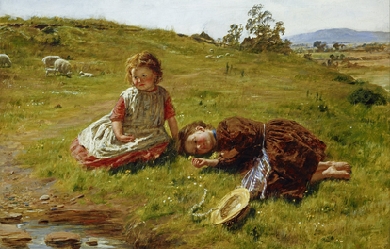
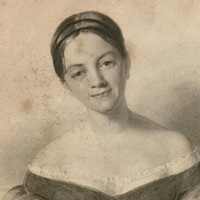
Letitia Elizabeth Landon (14 August 1802– 15 October 1838), English poet and novelist, better known by her initials L. E. L. Early life Letitia Elizabeth Landon was born on 14 August 1802 in Chelsea, London to John Landon and Catherine Jane, née Bishop. A precocious child, Landon learned to read as a toddler; an invalid neighbour would scatter letter tiles on the floor and reward young Letitia for reading, and, according to her father, “she used to bring home many rewards.” At the age of five, Landon began attending Mrs Rowden’s school at 22 Hans Place, which counted among its alumnae Mary Russell Mitford and Lady Caroline Lamb. The family moved to the country in 1809, so that John Landon could carry out a model farm project, and Landon was educated at home by her cousin Elizabeth from that point on. Elizabeth, though older, soon found her knowledge and abilities outstripped by those of her pupil: “When I asked Letitia any question relating either to history, geography, grammar - Plutarch’s Lives, or to any book we had been reading, I was pretty certain her answers would be perfectly correct; still, not exactly recollecting, and unwilling she should find out just then that I was less learned than herself, I used thus to question her: ‘Are you quite certain?’... I never knew her to be wrong.” When young, Letitia was very close to her younger brother, Whittington Henry, born 1804. Paying for Whittington through university (Worcester Colloege, Oxford) was one of the needs that drove Letitia to publish. She also supported his preferment and later dedicated her poem ‘Captain Cook’ to their childhood days together. Whittington went on to become a minister and published a book of Sermons in 1835. Sadly, he did not show any appreciation for all his sister’s financial assistance but spread false rumours about her marriage and death. Letitia also had a little sister, Elizabeth Jane (1806), who was a frail child and died in 1819, aged just 13. Little is known of Elizabeth but her death may well have left a profound impression on Letitia and it could be Elizabeth who is referred to in the poem ‘The Forgotten One’. Appearance and character The following statements from those who knew her give some idea of the woman known as L. E. L. Emma Roberts, from her introduction to “The Zenana and other works”: L.E.L. could not be, strictly speaking, called handsome ; her eyes being the only good feature in a countenance, which was, however, so animated, and lighted up with such intellectual expression, as to be exceedingly attractive. Gay and piquant, her clear complexion, dark hair, and eyes, rendered her, when in health and spirits, a sparkling brunette. The prettiness of L.E.L., though generally acknowledged, was not talked about ; and many persons, on their first introduction, were as pleasingly surprised as the Ettrick Shepherd, who, gazing upon her with great admiration, exclaimed “ I did na think ye had been sae bonny.” Her figure was slight, and beautifully proportioned, with little hands and feet ; and these personal advantages, added to her kind and endearing manners, rendered her exceedingly fascinating. William Jerdan, from his autobiography: In truth, she was the most unselfish of human creatures; and it was quite extraordinary to witness her ceaseless consideration for the feelings of others, even in minute trifles, whilst her own mind was probably troubled and oppressed; a sweet disposition, so perfectly amiable, from Nature’s fount, and so unalterable in its manifestations throughout her entire life, that every one who enjoyed her society loved her, and servants, companions, intimates, friends, all united in esteem and affection for the gentle and self-sacrificing being who never exhibited a single trait of egotism, presumption, or unkindliness! Mrs S.C. Hall from The Atlantic Monthly: Perhaps the greatest magic she exercised was, that, after the first rush of remembrance of all that wonderful young woman had written had subsided, she rendered you completely oblivious of what she had done by the irresistible charm of what she was. You forgot all about her books,—you only felt the intense delight of life with her ; she was penetrating and sympathetic, and entered into your feelings so entirely that you wondered how 'the little witch’ could read you so readily and so rightly,—and if, now and then, you were startled, perhaps dismayed, by her wit, it was but the prick of a diamond arrow. Words and thoughts that she flung hither and thither, without design or intent beyond the amusement of the moment, come to me still with a mingled thrill of pleasure and pain that I cannot describe, and that my most friendly readers, not having known her, could not understand. Mrs A.K.C. Elwood from her Memoirs of Literary Ladies: It was her invariable habit to write in her bed-room,—"a homely-looking, almost uncomfortable room, fronting the street, and barely furnished—with a simple white bed, at the foot of which was a small, old, oblong-shaped sort of dressing-table, quite covered with a common worn writing-desk, heaped with papers, while some strewed the ground, the table being too small for aught besides the desk. A little high-backed cane chair, which gave you any idea but that of comfort, and a few books scattered about, completed the author’s paraphernalia.” Emma Roberts again: She not only read, but thoroughly understood, and entered into the merits of every book that came out ; while it is merely necessary to refer to her printed works, to calculate the amount of information which she had gathered from preceding authors. The history and literature of all ages and all countries were familiar to her ; nor did she acquire any portion of her knowledge in a superficial manner ; the extent of her learning, and the depth of her research, manifesting themselves in publications which do not bear her name ; her claim to them being only known to friends, who, like myself, had access to her desk, and with whom she knew the secret might be safely trusted. One aspect that is common to all accounts of those who knew Miss Landon is that she possessed an exceptionally high level of intelligence. Fredric Rowton in his 'The Female Poets of Great Britain’ puts it thus: Of Mrs. Maclean’s genius there can be but one opinion. It is distinguished by very great intellectual power, a highly sensitive and ardent imagination, an intense fervour of passionate emotion, and almost unequalled eloquence and fluency. Of mere art she displays but little. Her style is irregular and careless, and her painting sketchy and rough: but there is genius in every line she has written. (Like many others, Rowton is deceived by the artistry of Landon’s projection of herself as the improvisatrice, L. E. L. As Glennis Stevenson writes, few poets have been as artificial as Landon in her 'gushing stream of Song’. She cites the usage of repetition, mirroring and the embedding of texts amongst the techniques that account for the characteristic intensity of Landon’s poetry.) Literary career An agricultural depression soon followed, and the family moved back to London in 1815, where John Landon made the acquaintance of William Jerdan, editor of the Literary Gazette. According to 19th-century commentator Mrs A. T. Thomson, Jerdan took notice of the young Landon when he saw her coming down the street, “trundling a hoop with one hand, and holding in the other a book of poems, of which she was catching a glimpse between the agitating course of her evolutions.” Jerdan encouraged Landon’s poetic endeavors, and her first poem was published under the single initial “L” in the Gazette in 1820, when Landon was 18. The following year, with financial support from her grandmother, Landon published a book of poetry, The Fate of Adelaide, under her full name. The book met with little critical notice but sold well; Landon, however, never received any profits, as the publisher went out of business shortly thereafter. The same month that The Fate of Adelaide appeared, Landon published two poems under the initials “L.E.L.” in Gazette; these poems, and the initials under which they were published, attracted much discussion and speculation. As contemporary critic Laman Blanchard put it, the initials L.E.L. “speedily became a signature of magical interest and curiousity.” Bulwer Lytton wrote that, as a young college student, he and his classmates would rush every Saturday afternoon for the ‘Literary Gazette,’ [with] an impatient anxiety to hasten at once to that corner of the sheet which contained the three magical letters L.E.L. And all of us praised the verse, and all of us guessed at the author. We soon learned it was a female, and our admiration was doubled, and our conjectures tripled.” Landon served as the Gazette’s chief reviewer as she continued to write poetry; her second collection, The Improvisatrice, appeared in 1824. Landon’s father died later that year, and Landon was forced to use her writing to support both herself and her family; Contemporaries saw this profit-motive as detrimental to the quality of Landon’s work. Mary Mitford claimed that the novels of Catherine Stepney were honed and polished by Landon. By 1826, Landon’s high reputation began to suffer as rumours circulated that she had had affairs or secretly borne children. (In 2000, scholar Cynthia Lawford published an article in the London Review of Books citing birth records implying that Landon had in fact borne children in the 1820s from a secret affair with Jerdan.) Details of Letitia’s children by William (Ella, Fred and Laura) and their descendants can be found in Susan Matoff Landon continued, however, to publish poetry, and in 1831 she published her first novel, Romance and Reality. She became engaged to John Forster. Forster became aware of the rumours regarding Landon’s sexual activity, and asked her to refute them. Landon responded that Forster should "make every inquiry in [his] power," which Forster did; after he pronounced himself satisfied of Landon’s purity, however, Landon broke off their engagement. To him, she wrote: The more I think, the more I feel I ought not– I can not– allow you to unite yourself with one accused of - I can not write it. The mere suspicion is dreadful as death. Were it stated as a fact, that might be disproved. Were it a difficulty of any other kind, I might say, Look back at every action of my life, ask every friend I have. But what answer can I give ...? I feel that to give up all idea of a near and dear connection is as much my duty to myself as to you... Privately, however, Landon stated that she would never marry a man who had mistrusted her. In a letter to Bulwer Lytton, she wrote that “if his future protection is to harass and humiliate me as much as his present - God keep me from it... I cannot get over the entire want of delicacy to me which could repeat such slander to myself.” After this, Landon began to "[talk] of marrying any one, and of wishing to get away, from England, and from those who had thus misunderstood her." In October 1836, Landon met George Maclean, governor of the Gold Coast (now Ghana), at a dinner party, and the two began a relationship. Maclean, however, moved to Scotland early the following year, to the surprise and distress of Landon and her friends. After much prodding, Maclean returned to England and he and Landon were married shortly thereafter, on 7 June 1838. The marriage was kept secret, and Landon spent the first month of it living with friends. Emma Roberts writes of Mr Maclean: “No one could better appreciate than L.E.L. the high and sterling qualities of her lover’s character, his philanthropic and unceasing endeavours to improve the condition of the natives of Africa ; the noble manner in which he interfered to prevent the horrid waste of human life by the barbarian princes in his neighbourhood ; and the chivalric energy with which he strove to put an end to the slave-trade. L.E.L. esteemed Mr. Maclean the more, in consequence of his not approaching her with the adulation with which her ear had been accustomed, to satiety ; she was gratified by the manly nature of his attachment. Possessing, in her estimation, merits of the highest order, the influence which he gained over her promised, in the opinion of those who were best acquainted with the docility of her temper, and her ready acquiescence with the wishes of those she loved, to ensure lasting happiness.” In early July, the couple sailed for Cape Coast, where they arrived on 16 August. Two months later, on 15 October, Landon was found dead, a bottle of prussic acid in her hand. However, that she was poisoned thereby was a gross assumption. There is ample evidence that she showed symptoms of Stokes-Adams syndrome for which the dilute acid was taken as a remedy. No autopsy was carried out and from the eye-witness accounts it seems, in retrospect, almost certain that Mrs McLean suffered a fatal convulsion. Her death was therefore from natural causes, causes that were independent of her location. In addition to the works listed below, Miss Landon is known to be responsible for innumerable anonymous reviews and other articles whose authorship is unlikely ever now to be established (compare Emma Roberts above). She also assumed the occasional pseudonym: for one, she adopted the name Iole for a period through 1826. One of her Iole poems, The Frozen Ship, was later included in the collection, The Vow of the Peacock. Among the poets of her time to recognise and admire her were Elizabeth Barrett Browning, who wrote “L.E.L.'s Last Question” in homage, and Christina Rossetti, who published a tribute poem entitled “L.E.L” in her 1866 volume “The Prince’s Progress and Other Poems.” Reputation Her reputation, while high in the 19th century, fell during most of the 20th as literary fashions changed and Landon’s poetry was perceived as overly simple and sentimental. In recent years, however, scholars and critics have increasingly studied her work, beginning with Germaine Greer in the 1970s. Critics such as Isobel Armstrong argue that the supposed simplicity of poetry such as Landon’s is deceptive, and that women poets of the 19th century often employed a method of writing which allows for multiple, concurrent levels of meaning. Moreover, 20th century opinions were perhaps influenced by the almost completely inaccurate picture of the poet and her life that built up following her death. It was not considered that the very bases for such criticism had already been systematically and effectively demolished by Sarah Sheppard in her “Characteristics of the Genius and Writings of L E L” of 1841. Any assessment should not forget the factors that brought Landon to pre-eminence: the originality of her ideas and the sheer beauty of her poetry in all its many diverse forms. Those ideas engendered a whole new school of poetry (the 'Landon School’), which spread not only in England but also in America.

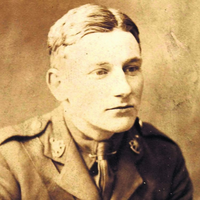
Edmund Charles Blunden, CBE, MC (1 November 1896– 20 January 1974) was an English poet, author and critic. Like his friend Siegfried Sassoon, he wrote of his experiences in World War I in both verse and prose. For most of his career, Blunden was also a reviewer for English publications and an academic in Tokyo and later Hong Kong. He ended his career as Professor of Poetry at the University of Oxford. Biography Early years and World War I Born in London, Blunden was the eldest of the nine children of Charles Edmund Blunden (1871–1951) and his wife, Georgina Margaret née Tyler, who were joint-headteachers of Yalding school. Blunden was educated at Christ’s Hospital and The Queen’s College, Oxford. In August 1915 Blunden was commissioned as a second lieutenant in the Royal Sussex Regiment and served with them right up to the end of World War I, taking part in the actions at Ypres and the Somme, and receiving the Military Cross in the process. Unusually for a junior infantry officer, Blunden survived nearly two years in the front line without physical injury, but for the rest of his life bore mental scars from his experiences. With characteristic self-deprecation he attributed his survival to his diminutive size: he made “an inconspicuous target”. His own account of his frequently traumatic experiences was published in 1928 under the title Undertones of War. Career as a writer Blunden left the army in 1919 and took up the scholarship at Oxford that he had won while still at school. On the same English Literature course was Robert Graves, and the two were close friends during their time at Oxford together, but Blunden found university life unsatisfactory and left in 1920 to take up a literary career, at first acting as assistant to Middleton Murry on the Athenaeum. An early supporter was Siegfried Sassoon, who became a lifelong friend. In 1920 Blunden published a collection of poems, The Waggoner, and with Alan Porter edited the poems of John Clare (mostly from Clare’s manuscript). Blunden’s next book of poems, The Shepherd, published in 1922 won the Hawthornden Prize, but his poetry, though well reviewed, did not provide enough to live on, and in 1924 he accepted the post of Professor of English at the University of Tokyo. He returned to England in 1927, and was literary editor of the Nation for a year. In 1927 he published a short book, On the Poems of Henry Vaughan, Characteristics and Intimations, with his principal Latin poems carefully translated into English verse (London: H. Cobden-Sanderson, 1927), expanding and revising an essay that he had published in November 1926 in the London Mercury. In 1931 he returned to Oxford as a Fellow of Merton College, where he was highly regarded as a tutor. During his years in Oxford, Blunden published extensively: several collections of poetry including Choice or Chance (1934) and Shells by a Stream (1944), prose works on Charles Lamb; Edward Gibbon; Keats’s publisher; Percy Bysshe Shelley (Shelley: A Life Story); John Taylor; and Thomas Hardy; and a book about a game he loved, Cricket Country (1944). He returned to full-time writing in 1944, becoming assistant editor of The Times Literary Supplement. In 1947 he returned to Japan as a member of the British liaison mission in Tokyo. In 1953, after three years back in England he accepted the post of Professor of English Literature at the University of Hong Kong. Blunden retired in 1964 and settled in Suffolk. In 1966 he was nominated for the Oxford Professorship of Poetry in succession to Robert Graves; with some misgivings he agreed to stand and was elected by a large majority over the other candidate, Robert Lowell. However, he now found the strain of public lecturing too much for him, and after two years he resigned. He died of a heart attack at his home at Long Melford, Suffolk, on 20 January 1974, and is buried in the churchyard of Holy Trinity Church, Long Melford. Personal life Blunden was married three times. While still in the army he met and married Mary Daines in 1918. They had three children, the first of whom died in infancy. They divorced in 1931, and in 1933 Blunden married Sylva Norman, a young novelist and critic. That marriage, which was childless, was dissolved in 1945, and in the same year he married Claire Margaret Poynting (1918-2000), a former pupil of his; they had four daughters. While in Japan in the summer of 1925, he met Aki Hayashi, with whom he began a relationship. When Blunden returned to England in 1927, Aki accompanied him and would become his secretary. The relationship later changed from a romantic one to a platonic friendship, and they remained in contact for the rest of her life. Blunden’s love of cricket, celebrated in his book Cricket Country, is described by the biographer Philip Ziegler as fanatical. Blunden and his friend Rupert Hart-Davis regularly opened the batting for a publisher’s eleven in the 1930s (Blunden insisted on batting without gloves). An affectionate obituary tribute in The Guardian commented, “He loved cricket... and played it ardently and very badly”, while in a review of Cricket Country, George Orwell described him as “the true cricketer”: The test of a true cricketer is that he shall prefer village cricket to 'good’ cricket [.... Blunden’s] friendliest memories are of the informal village game, where everyone plays in braces, where the blacksmith is liable to be called away in mid-innings on an urgent job, and sometimes, about the time when the light begins to fail, a ball driven for four kills a rabbit on the boundary. In a 2009 appreciation of the book and its author, Bangalore writer Suresh Menon writes, Any cricket book that talks easily of Henry James and Siegfried Sassoon and Ranji and Grace and Richard Burton (the writer, not the actor) and Coleridge is bound to have a special charm of its own. As Blunden says, “The game which made me write at all, is not terminated at the boundary, but is reflected beyond, is echoed and varied out there among the gardens and the barns, the dells and the thickets, and belongs to some wider field.” Perhaps that is what all books on cricket are trying to say. Blunden had a robust sense of humour. In Hong Kong he relished linguistic misunderstandings such as those of the restaurant that offered “fried prawn’s balls” and the schoolboy who wrote, “In Hong Kong there is a queer at every bus-stop.” His fellow poets’ regard for Blunden was illustrated by the contributions to a dinner in his honour for which poems were specially written by Cecil Day-Lewis and William Plomer; T. S. Eliot and Walter de la Mare were guests; and Siegfried Sassoon provided the Burgundy. Honours Blunden’s public honours included the C.B.E., 1951; the Queen’s Gold Medal for Poetry, 1956; The Royal Society of Literature’s Benson Medal; the Order of the Rising Sun, 3rd Class (Japan), 1963; and Honorary Membership of the Japan Academy. On 11 November 1985, Blunden was among 16 Great War poets commemorated on a slate stone unveiled in Poets’ Corner in Westminster Abbey The inscription on the stone was written by fellow Great War poet, Wilfred Owen. It reads: “My subject is War, and the pity of War. The Poetry is in the pity.” Works * = * Blunden’s output was prolific. To those who thought he published too much he quoted Walter de la Mare’s observation that time was the poet’s best editor. His books of poetry include Poems 1913 and 1914 (1914); Poems Translated from the French (1914); Three Poems (1916); The Barn (1916); The Silver Bird of Herndyke Mill; Stane Street; The Gods of the World Beneath, (1916); The Harbingers (1916); Pastorals (1916); The Waggoner and Other Poems (1920); The Shepherd, and Other Poems of Peace and War (1922); Old Homes (1922); To Nature: New Poems (1923); Dead Letters (1923); Masks of Time: A New Collection of Poems Principally Meditative (1925); Japanese Garland (1928); Retreat (1928); Winter Nights: A Reminiscence (1928); Near and Far: New Poems (1929); A Summer’s Fancy (1930); To Themis: Poems on Famous Trials (1931); Constantia and Francis: An Autumn Evening, (1931); Halfway House: A Miscellany of New Poems, (1932); Choice or Chance: New Poems (1934); Verses: To H. R. H. The Duke of Windsor, (1936); An Elegy and Other Poems (1937); On Several Occasions (1938); Poems, 1930–1940 (1940); Shells by a Stream (1944); After the Bombing, and Other Short Poems (1949); Eastward: A Selection of Verses Original and Translated (1950); Records of Friendship (1950); A Hong Kong House (1959); Poems on Japan (1967). * Artists Rifles, an audiobook CD published in 2004, includes a reading of Concert Party, Busseboom by Blunden himself, recorded in 1964 by the British Council. Other Great War poets heard on the CD include Siegfried Sassoon, Edgell Rickword, Robert Graves, David Jones and Lawrence Binyon. Blunden can also be heard on Memorial Tablet, an audiobook of readings by Sassoon issued in 2003. References Wikipedia—https://en.wikipedia.org/wiki/Edmund_Blunden

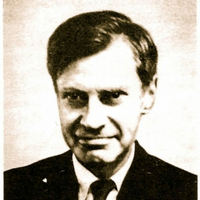
Arthur Seymour John Tessimond (Birkenhead, 19 July 1902– Chelsea, London 13 May 1962) was an English poet. He went to Birkenhead School until the age of 14, before being sent to Charterhouse School, but ran away at age 16. From 1922 to 1926 he attended the University of Liverpool, where he read English literature, French, Philosophy and Greek. He later moved to London where he worked in bookshops, and also as a copywriter. After avoiding military service in World War II, he later discovered he was unfit for service. He suffered from bipolar disorder, and received electro-convulsive therapy. He first began to publish in the 1920s in literary magazines. He was to see three volumes of poetry were published during his life: Walls of Glass in 1934, Voices in a Giant City in 1947 and Selections in 1958. He contributed several poems to a 1952 edition of Bewick’s Birds. He died in 1962 from a brain haemorrhage. In the mid-1970s he was the subject of a radio programme entitled Portrait of a Romantic. This, together with the publication of the posthumous selection Not Love Perhaps in 1972, increased interest in his work; and his poetry subsequently appeared in school books and anthologies. A 1985 anthology of his work The Collected Poems of A. S. J. Tessimond, edited by Hubert Nicholson, contains previously unpublished works. In 2010 a new collected poems, based closely on Nicholson’s edition, was published by Bloodaxe Books. In April 2010 an edition of Brian Patten’s series Lost Voices on BBC Radio Four was committed solely to Tessimond. References Wikipedia—https://en.wikipedia.org/wiki/A._S._J._Tessimond

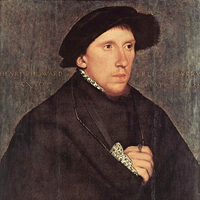
Henry Howard, Earl of Surrey, KG (1516/1517– 19 January 1547), was an English aristocrat, and one of the founders of English Renaissance poetry. He was a first cousin of both Anne Boleyn and Catherine Howard, the second and fifth wives of King Henry VIII. Life He was the eldest son of Thomas Howard, 3rd Duke of Norfolk, and his second wife, the former Lady Elizabeth Stafford (daughter of Edward Stafford, 3rd Duke of Buckingham), so he was descended from kings on both sides of his family tree: King Edward I on his father’s side and King Edward III on his mother’s side. He was reared at Windsor with Henry VIII’s illegitimate son Henry FitzRoy, 1st Duke of Richmond and Somerset, and they became close friends and, later, brothers-in-law upon the marriage of Surrey’s sister to Fitzroy. Like his father and grandfather, he was a brave and able soldier, serving in Henry VIII’s French wars as “Lieutenant General of the King on Sea and Land.” He was repeatedly imprisoned for rash behaviour, on one occasion for striking a courtier, on another for wandering through the streets of London breaking the windows of sleeping people. He became Earl of Surrey in 1524 when his grandfather died and his father became Duke of Norfolk. In 1532 he accompanied his first cousin Anne Boleyn, the King, and the Duke of Richmond to France, staying there for more than a year as a member of the entourage of Francis I of France. In 1536 his first son, Thomas (later 4th Duke of Norfolk), was born, Anne Boleyn was executed on charges of adultery and treason, and the Duke of Richmond died at the age of 17 and was buried at one of the Howard homes, Thetford Abbey. In 1536 Surrey also served with his father against the Pilgrimage of Grace rebellion protesting against the Dissolution of the Monasteries. Literary activity and legacy He and his friend Sir Thomas Wyatt were the first English poets to write in the sonnet form that Shakespeare later used, and Surrey was the first English poet to publish blank verse (unrhymed iambic pentameter) in his translation of the second and fourth books of Virgil’s Aeneid. Together, Wyatt and Surrey, due to their excellent translations of Petrarch’s sonnets, are known as “Fathers of the English Sonnet”. While Wyatt introduced the sonnet into English, it was Surrey who gave them the rhyming meter and the division into quatrains that now characterizes the sonnets variously named English, Elizabethan or Shakespearean sonnets. Death and burial Henry VIII, consumed by paranoia and increasing illness, became convinced that Surrey had planned to usurp the crown from his son Edward. The King had Surrey imprisoned—with his father—sentenced to death on 13 January 1547, and beheaded for treason on 19 January 1547 (his father survived impending execution only by it being set for the day after the king happened to die, though he remained imprisoned). Surrey’s son Thomas became heir to the dukedom of Norfolk instead, inheriting it on the 3rd duke’s death in 1554. He is buried in a spectacular painted alabaster tomb in the church of St Michael the Archangel, Framlingham. Marriage and issue He married Frances de Vere, the daughter of John de Vere, 15th Earl of Oxford, and Elizabeth Trussell. They had two sons and three daughters: Thomas Howard, 4th Duke of Norfolk (10 March 1536– 2 June 1572), married (1) Mary FitzAlan (2) Margaret Audley (3) Elizabeth Leyburne. Henry Howard, 1st Earl of Northampton, who died unmarried. Jane Howard, who married Charles Neville, 6th Earl of Westmorland. Margaret Howard, who married Henry Scrope, 9th Baron Scrope of Bolton. Katherine Howard, who married Henry Berkeley, 7th Baron Berkeley. In popular culture Henry Howard, Earl of Surrey was portrayed by actor David O’Hara in The Tudors, a television series which ran from 2007 to 2010. Ancestry References Wikipedia—https://en.wikipedia.org/wiki/Henry_Howard,_Earl_of_Surrey

